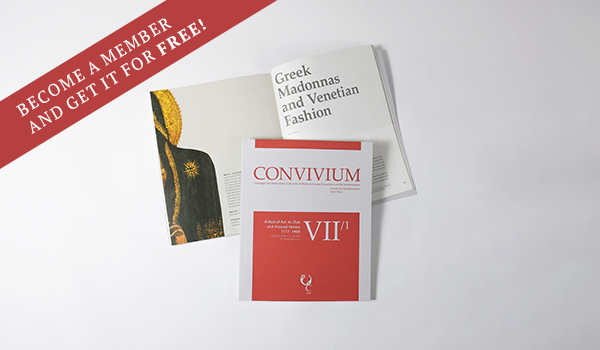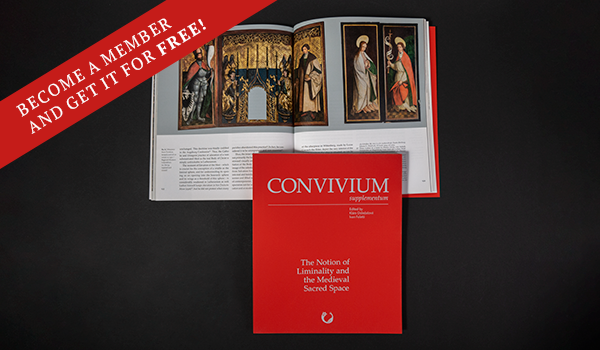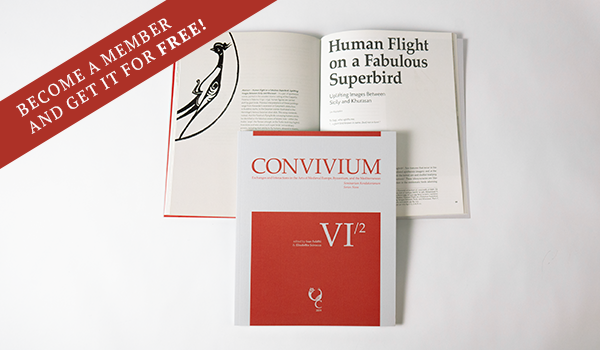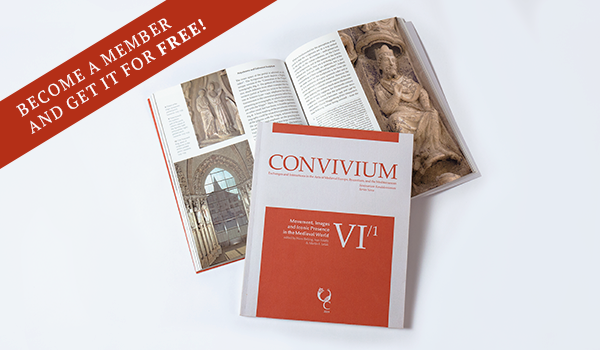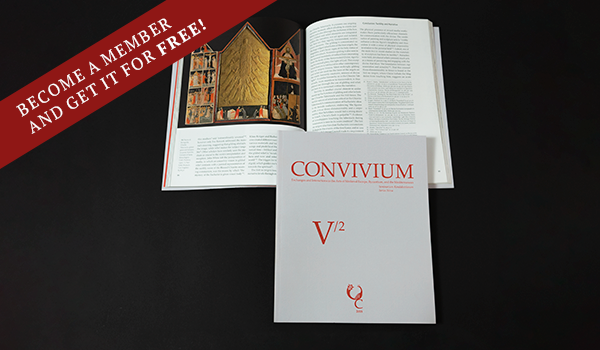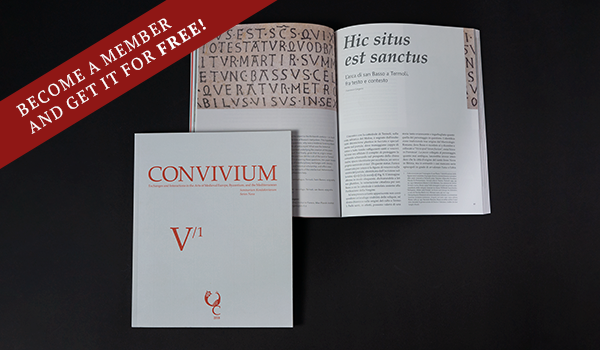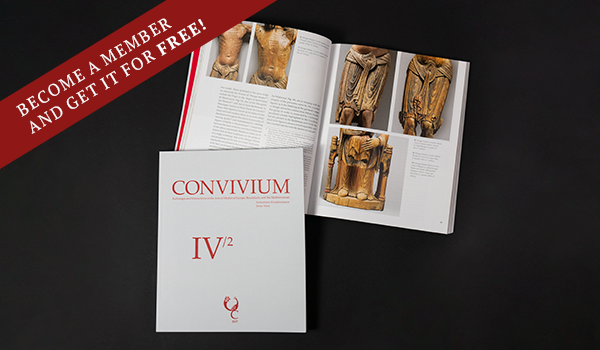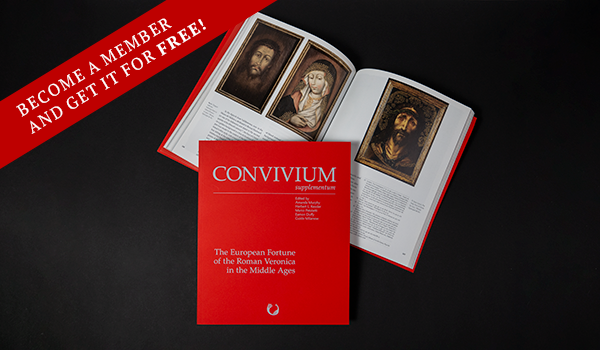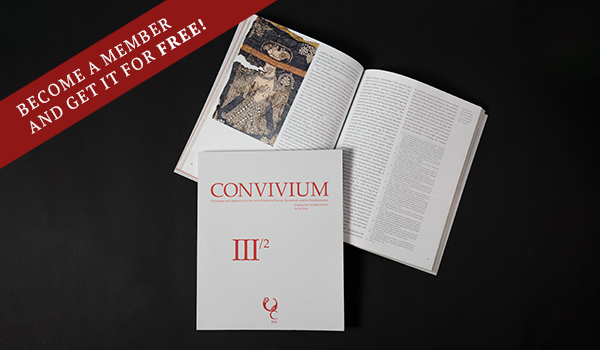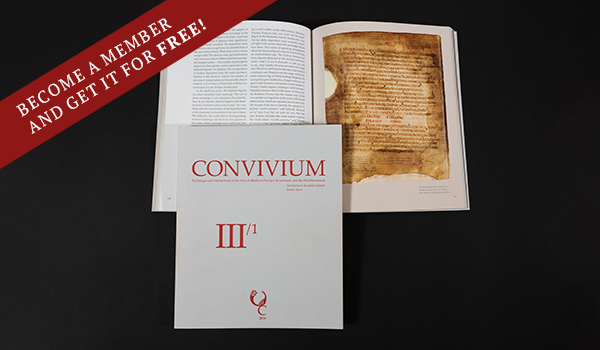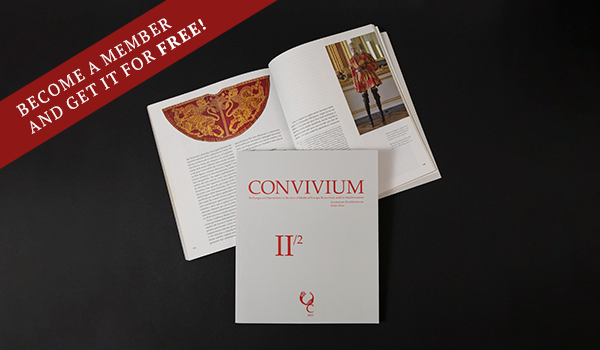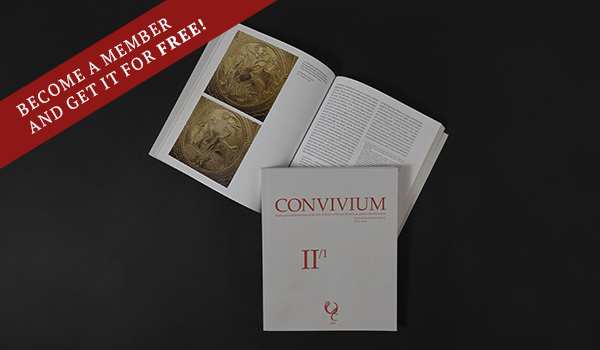journal CONVIVIUM

CONVIVIUM
Supplementum
Inventing Past Narratives. Venice and the Adriatic Space (13th–15th Centuries)
Edited by Ilaria Molteni & Valeria Russo
2023
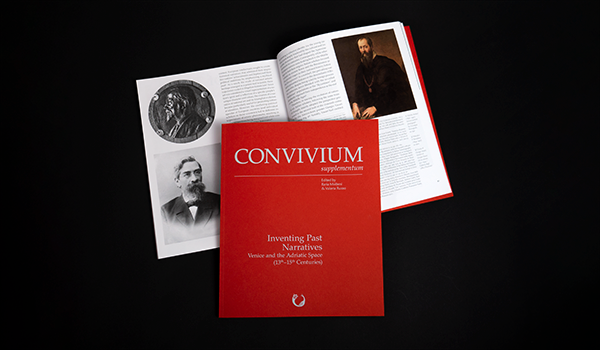
CONVIVIUM Supplementum
Inventing Past Narratives. Venice and the Adriatic Space (13th–15th Centuries)
Ilaria Molteni & Valeria Russo — Framing Venetian Past Narratives. An Epistemological Introduction
Francesca Gambino — About the Time Charlemagne Invaded the Laguna and Venice Returned Frankish Fire with Bread / Niccolò Gensini —
“Bons Mariniers” Between History and Prophecy. Venice, Venetians, and the Mediterranean Sea in the Prophecies de Merlin / Giuseppina Brunetti —
Memory between Tradition and Modernity. Odolric’s Historicism and Bégon’s Promotion of Image in Romanesque Conques / Kirk Ambrose —
Morte a Vwenezia. Per la morte di Dante: l’invenzione e i documenti / Ruben Campini, Ivan Foletti, & Annalisa Moraschi —
Clash of Titans. Venturi, Kondakov, and the Staging of Late Medieval Venetian Painting in the History of Art History

CONVIVIUM
Supplementum
Contextualizing Conques. Imaginaries, Narratives & Geographies
Edited by Ivan Foletti, Cynthia Hahn, Kris N. Racaniello, Cécile Voyer & Adrien Palladino
2023
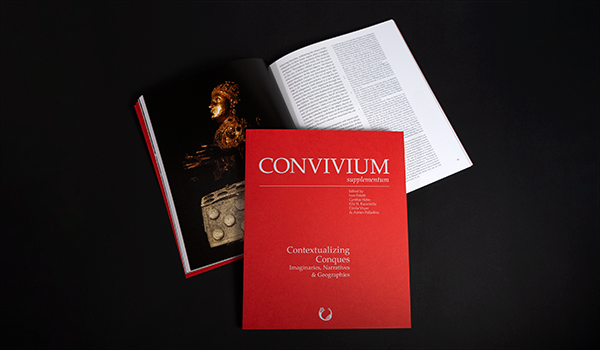
CONVIVIUM Supplementum
Contextualizing Conques. Imaginaries, Narratives & Geographies
Ivan Foletti, Cynthia Hahn, Kris N. Racaniello, Cécile Voyer & Adrien Palladino — Contextualizing Conques
Adrien Palladino — Byzance à Conques? An Unrealized Dream of “Neo-Byzantine” Architecture in Nineteenth-Century France / Martin F. Lešák —
The “Glorious Traveler”. St Foy’s Triumphal March from Rodez to Conques or the Liturgical Afterlife of Two Medieval Reliquaries / Lei Huang —
Memory between Tradition and Modernity. Odolric’s Historicism and Bégon’s Promotion of Image in Romanesque Conques / Kirk Ambrose —
The Counterfeit and the Authentic in the Conques Tympanum / Kris N. Racaniello —
The “Iron Man”. Imagining Muslims and Vanishing Objects in the Shrine of Sainte Foy at Conques / Sabina Rosenbergová —
Digital Heritage Mapping of Medieval Routes: Retracing Pilgrimage to Conques through the Liber Miraculorum Sanctae
Fidis / Michele Luigi Vescovi, with Jasmin Richardson & Tomas Shannon —
Mapping Monasticism. A Digital Approach to the Network of Conques / Zuzana Frantová —
The Throne of Wisdom of Beaulieu. The Silver Embodiment of the Triumphant Church
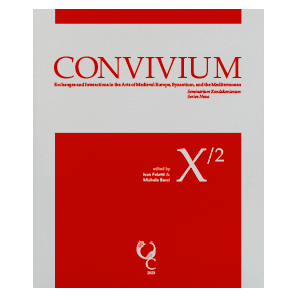
CONVIVIUM X/2
Edited by Ivan Foletti & Michele Bacci
2023
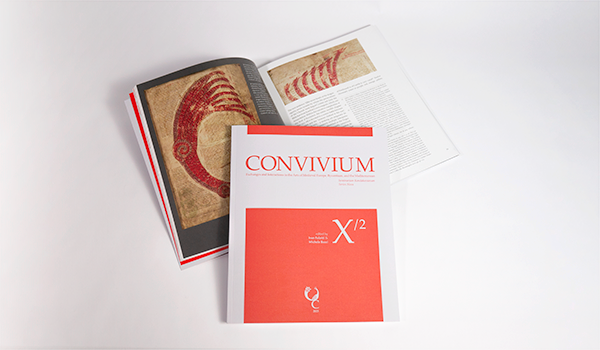
CONVIVIUM X/1
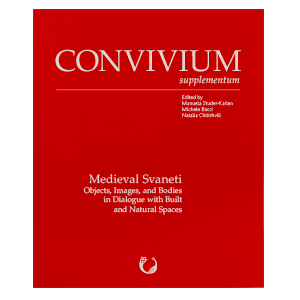
CONVIVIUM
Supplementum
Medieval Svaneti
Edited by Manuela
2023
CONVIVIUM Supplementum
Medieval Svaneti
Manuela Studer-Karlen — Acknowledgments
Michele Bacci & Ivan Foletti – Svaneti and the Rhetoric of Distance
Irine Elizbarashvili & Irene Giviashvili — Architecture of the Upper
Svaneti / Salome Meladze — Painted Chancel Screens in Upper Svaneti. The
Evidence of Early Monuments / Nina Chichinadze — The Interactions of Images in
Sacred Space. A Case Study: The Church of St
Barbara in Khe, Upper Svaneti / Marine Kenia —The Image of the Virgin in the
Medieval Painting of Svaneti / Ekaterine Gedevanishvili — Iprari Murals. Reading
of the Scene of the Apparition of the Angel to
Joshua / Manuela Studer-Karlen — Image and Liturgy. The Church of the Archangels
in Tanghili / Antony Eastmond — Icons, Saints, and Society in
Svaneti / Nana Burchuladze — Icons from Svaneti in the Context of Byzantine
Paintings / Nutsa Batiashvili & Nikoloz Aleksidze — Symbolic Treasure, Care, and
Materiality in Upper Svaneti
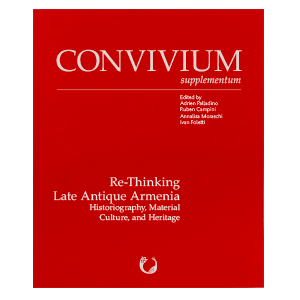
CONVIVIUM
Supplementum
Re-Thinking Late Antique Armenia
Edited by Adrien Palladino, Ruben Campini, Annalisa Moraschi & Ivan Foletti
2023
CONVIVIUM Supplementum
Re-Thinking Late Antique Armenia: Historiography, Material Culture,
and Heritage
Ivan Foletti & Adrien Palladino — Late Antiquity and Armenia. From Marginalized Region to
Creative Force
Patrtick Donabédian – Culmination of a Late Antique Legacy? The Golden Age of Armenian
Architecture in the Seventh Century /
Nazénie Garibian — The First Armenian Christian Sanctuaries and Shrines. Reconsidering the
Received Tradition /
Lilit Mikayelyan — Greco-Roman Ornamental Motifs in Armenia and Iran. Commonality and
Sustainability of Tradition (5th–11th Centuries) /
Zaruhi Hakobyan — The Image of St Christopher Cynocephalus in Early Medieval Sculpture of
Armenia /
Adrien Palladino — From Desperate Solidarity to Dispassionate Eye. Shifting French Perspectives
on Early Medieval Armenian Art
Christina Maranci – Late Antique Armenia. Past, Present, and Future
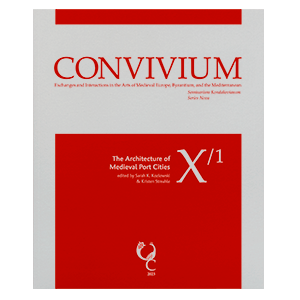
CONVIVIUM X/1
The Architecture of Medieval Port Cities
Editovali Sarah K. Kozlowski & Kristen Streahle
2023
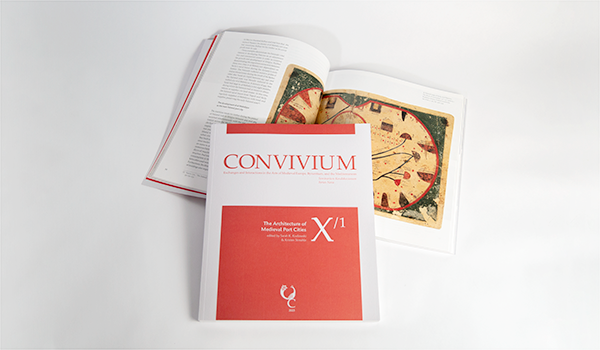
CONVIVIUM X/1
The Architecture of Medieval Port Cities:
Italy
and the Mediterranean
Sarah K. Kozlowski & Kristen Streahle –
Navigating between Port Cities. Past and Present
Elizabeth Kassler-Taub — The Urban Waterscape of Early Modern Palermo /
Ali Asgar Hussamuddin Alibhai — A Tale of Two Port Cities. Al-Mahdiyya, Palermo, and the Timber Trade
of the Medieval Mediterranean /
Teresa Colletta — Arsenali marittimi e città portuali del Mediterraneo medievale. Gli arsenali di
Napoli, metropoli portuale del Trecento /
Renard Gluzman — To See Venice in a Grain of Sand. An Experiment in Writing a Microhistory of Waterway
Erosion Instigated by a Shipwreck, 1607–1622
/
Aristea S. Gratsea — The Bay of Fraschia. Characteristics and Function in the Maritime and Shipping
Activities of Venetian Crete (15th–16th Centuries) /
Ana Marinković & Petar Strunje — Between Plague and Trade. Topography and Typology of the Maritime
Lazzarettos in Dubrovnik
/
Joseph C. Williams — The Mobility of Builders in Medieval Port Cities. The Foreign Masters of
Dubrovnik Cathedral /
Joseph M. Silva — Securing the Mediterranean. Cosimo i de’ Medici and Portoferraio /
Karen Rose Mathews — Between Two Rivers and the Sea. Pisa’s Identity as a Port City in
the Middle Ages
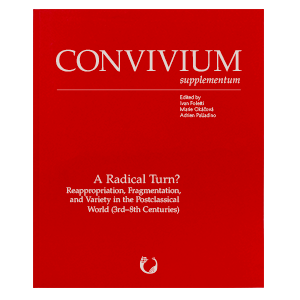
CONVIVIUM
Supplementum
A Radical Turn?
Edited by
Ivan Foletti,
Marie Okáčová
&
Adrien Palladino
2022
CONVIVIUM Supplementum
A Radical Turn?
Reappropriation, Fragmentation, and Variety in the Postclassical World (3rd–8th
Centuries)
Ivan Foletti, Marie Okáčová & Adrien Palladino — A Radical Turn? “Late Antique”
Anxiety, Rupture, and Creative Continuity
Ivan Foletti & Marie Okáčová – An Age of Fragmentation. Evidence from Late Antique Literary,
Visual,
and Material Cultures/
Jana Mikulová — The Variability of Late Latin Authors’ Means for Marking Direct
Discourse /
Chiara Croci — “Abbreviated” Depictions? Questions on the Earliest Christian Images /
Alberto Virdis — Fragmentation as a Visual Principle. From Cloisonné to Early Stained
Glass /
Katharina Meinecke — Ornamental Surfaces. A “Global Trend” in Late Antique
Afro-Eurasia /
Marco Aimone – Two Byzantine Capitals “with Pine Cones at Their Corners” and Their Monograms.
Technical, Stylistic, and Historical Observations /
Renate Johanna Pillinger – Wunder Jesu auf ausgewählten (römischen) Zwischengoldgläsern

CONVIVIUM IX/2
Editovali Julian Gardner & Serena Romano
2022
CONVIVIUM IX/2
Julian Gardner & Serena Romano –
Italy and Beyond
Jacek Wiewiorowski — The Insigne of the Proconsul of Africa. Maritime Shipping Depictions
in the Notitia Dignitatum /
Chiara Croci — Pavia picta. Appunti sulla cultura figurativa longobarda a partire dal San
Michele /
Manuela Gianandrea — Novità e riflessioni su due dipinti murali dell’alto Medioevo romano.
L’affresco con sant’Agata e l’inedita pittura con busto di santa /
Mzia Janjalia — Between Jerusalem and Constantinople. Revisiting the Eleventh Century:
Georgian Religious Art
/ Maria Harvey — From Provence to Calabria. Filippo Sangineto and Simone Martini’s St
Ladislas /
Martin F. Lešák — Transforming a Desert, Claiming the Domain. The Early Medieval Landscape of Conques
/
Stefania Gerevini — Dynamic Splendor. The metalwork altarpieces of medieval Venetia
Serena Romano — Journeys of the Soul. Multiple Topographies in the Camposanto of Pisa,
Michele Bacci,
David Ganz, Rahel Meier eds, Pisa: Edizioni della Normale 2020
/
Frédéric Elsig — Adrian Bremenkamp, Ars nova translata. Altniederländische Malerei in Neapel und der
Krone Aragon, Munich: Hirmer Verlag 2021
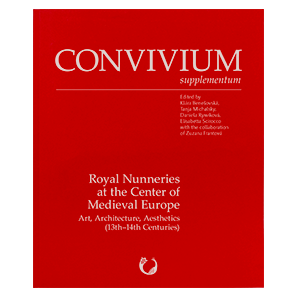
CONVIVIUM
Supplementum
Royal Nunneries at the Center of Medieval Europe
Edited by Klára Benešovská, Tanja Michalsky, Daniela Rywiková & Elisabetta Scirocco
2022
CONVIVIUM Supplementum
Royal Nunneries at the Center of Medieval Europe.
Art,
Architecture, Aesthetics (13th–14th Centuries)
Tanja Michalsky, Daniela Rywiková & Elisabetta Scirocco — Royal Nunneries at the Center of
Medieval Europe. Art, Architecture, Aesthetics (13th–14th Centuries)
Jakub Adamski & Piotr Pajor – The Architecture of Poor Clares' Nunnery in Stary Sącz. Early
Fourteenth-Century Artistic Relations between Lesser Poland and Upper Rhineland /
Susan Marti — Networking for Eternal Salvation? Agnes of Habsburg, Queen of Hungary and
Co-Founder of Königsfelden /
Michaela Zöschg — Beyond Naples. Fourteenth-Century Royal Widows and their Clarissan Foundations
in a Trans-Regional Perspective /
Giulia Rossi Vairo — Seeing Double in Odivelas. Nuns and Monks at the Monastery of St Dinis, a
Royal Pantheon on Late Medieval Portugal /
Angelica Federici — Art, Architecture, and Aesthetics in the Baronial Convents of Medieval
Latium /
Agnieszka Patała — The Convent of Poor Clares in Breslau and its Medieval
Furnishings /
Eszter Konrád — Helisabet filia Stephani regis Ungarorum illustris. Image of a Saintly
Nun of the Arpad Dynasty as Reflected in Hagiographic Sources
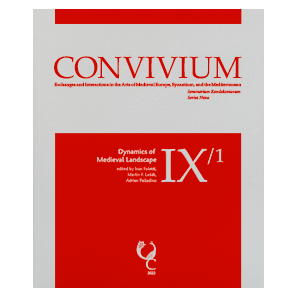
CONVIVIUM IX/1
Edited by Ivan Foletti, Martin F. Lešák & Adrien Palladino
2022
CONVIVIUM IX/1
Adrien Palladino
Dynamics of Medieval Landscape. Measure, Enviroment, Conversion
Michele Bacci — The New Zion of Ot’kht’a / Manuela Studer-Karlen — The Pictorial Compositions
on the Cross Stelae in Georgia (Fifth–Ninth Centuries) /
Alberto Virdis — Landscapes of the Past. Interactions with Prehistoric Monuments and Early Medieval
Conversion Practices Between Sardinia and the British Isles /
Fabio Mari — Paesaggio sacro e cultura visiva. Le pitture della chiesa inferiore del Sacro Speco di
Subiaco /
Luca Capriotti — Note sul paesaggio medievale. Cicli scultorei dei mesi nella Toscana del XII e XIII
secolo / Alessandra Panicco — The Medieval Origins of the Carthusian Landscape in Piedmont
(Twelfth–Fourteenth Centuries) /
Martin F. Lešák — Transforming a Desert, Claiming the Domain. The Early Medieval Landscape of Conques
/
Ivan Foletti — Spaces for Miracles. Constructing Sacred Space through the Body, from Conques to the
Mediterranean, and Beyond
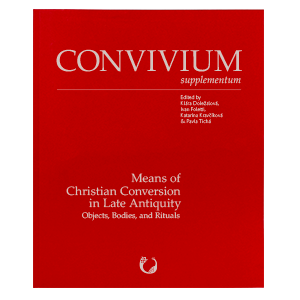
CONVIVIUM
Supplementum
Means of Christian Conversion in Late Antiquity. Object, Bodies and Rituals.
Edited by Klára Doležalová, Ivan Foletti, Katarína Kravčíková & Pavla Tichá
2021
CONVIVIUM Supplementum
Means of Christian Conversion in Late Antiquity.
Object,
Bodies, and
Rituals.
Klára Doležalová, Ivan Foletti, Katarína Kravčíková & Pavla Tichá — Means of Christian Conversion
in Late Antiquity
Barbara Bruderer Eichberg — Activation of the Invisible. A prolegomenon to the Evolution of the
Consecration of Baptismal Water in the Latin West as a Performative and Sensorial Act. The Roman Rite
(3rd–9th century) /
Pavla Tichá & Markéta Kulhánková — Vatican Hill in the Time of Conversion. The Phrygianum
Neighboring Old Saint Peter’s /
Robin M. Jensen — Conversion to Jesus as a Healer God. Visual and Textual Evidence
Gajane Achverdjanová & Ivan Foletti — Purifying Body and Soul. Late Antique Combs,
Their Use and Visual Culture /
Zuzana Frantová — Luxury for All (?). Ivory Diptychs and Their Use in the Baptismal
Liturgy /
Juliette J. Day — Materiality and the Sensation of Sin in Late Antique Pre-Baptismal Rituals. The
Short-Lived “Rite of the Cilicium”
Megan Bunce — Shrines, Special Burials, and the Christianization of Britain /
Alžběta Filipová & Adrien Palladino — Converting Minds, Eyes, and Bodies? The Early Cult of
Relics Between Rhetoric and Material Practices in Northern Italy and Gallia
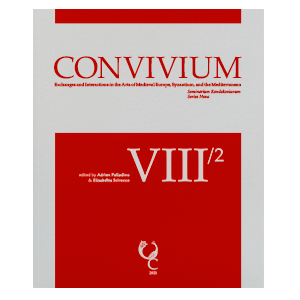
CONVIVIUM VIII/2
Edited by Adrien Palladino & Elisabetta Scirocco
2021
CONVIVIUM VIII/2
Adrien Palladino & Elisabetta Scirocco
The “Middle Ages”’ Interconnectedness
Lenka Vrlíková — Between Alexandria and Rome? Reflections on Artistic Circulation and
Cross-Cultural Interaction in Ethiopian Painting in the Fifteenth Century / Sabine
Sommerer —
Substitut des Königs. Mittelalterliche Throne mit Königsbildern als repräsentative
Agenten /
Sean V. Leatherbury — Decorated Walls, Description, and Cultural Memory. Between Byzantium,
Persia,
and Early Islam / Alberto Virdis — Color in Suger’s Saint-Denis: Matter and
Light /
Mario Marcenaro — Il mosaico del battistero “monumentale” di Albenga e i primi
Concili /
Alexandre Varela — Des peintures murales syriaques inédites. L’église Mor-Stephanos de Kfarbe
dans le T.ūr ʿAbdīn
(Sud-est de la Turquie) /
Maria Aimé Villano — Liturgical Furniture in the Basilica of San Marco. The Ciboria in the Main
Chapel
and in the Chapels of the
Nicopeia and Sacramento / Antonio De Caro — (Re-)Producing Conversion from Rome to
Beijing.
Stories Related to the Replicas of the Salus Populi Romani in the Late Sixteenth Century
contents
Ivan Foletti, Adrien Palladino, Vincent Debiais, Éric Sparhubert, Cécile Voyer — “Romanesque”
Conques
as a Neo-Caroligian Project
/ Adrien Palladino — Dissipating Strzygowski’s Shadow. Weitzmann on Armenian Book
Illumination
Adrien Palladino — Marco Aimone, The Wyvern Collection: Byzantine and Sasanian Silver, Enamels
and
Works of Art,
with contributions by Erica Cruickshank Dodd, Rika Gyselen, Peter Northoven, and Jack Ogden,
London / New York: Thames & Hudson,
2020 / Martin Schwarz — The Lives and Afterlives of Medieval Iconography, Pamela
A. Patton,
Henry D. Schilb eds, University Park,
Pennsylvania: Penn State University Press, 2021 / Elisabetta Scirocco —
Vinni Lucherini, La Cronaca angioina dei re d’Ungheria. Uno specchio eroico
e fiabesco della sovranità, Paris: Classiques Garnier, 2021 / Antonino Tranchina —
Roland Betancourt, Byzantine Intersectionality. Sexuality, Gender & Race
in the Middle Ages, Princeton and Oxford: Princeton University Press, 2020 /
Alberto Virdis — L’Image miraculeuse dans le christianisme occidental (Moyen Âge – Temps
modernes),
Nicolas Balzamo,
Estelle Leutrat eds, Tours: Presses Universitaires François-Rabelais, 2020
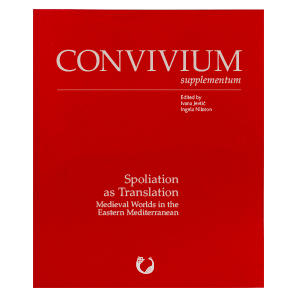
CONVIVIUM
Supplementum
Spoliation as Translation. Medieval Worlds in the Eastern Mediterranean
Edited by Ivana Jevtić & Ingela Nilsson
2021
CONVIVIUM Supplementum
Spoliation as Translation. Medieval Worlds in the Eastern
Mediterranean
Ivana Jevtić & Ingela Nilsson
Towards an Empathetic Approach to Material and Literary Spolia
Ingela Nilsson — Imitation as Spoliation, Reception as Translation. The Art of Transforming
Things
in Byzantium / Karen Rose Mathews — Speaking Antiquity. Ancient Spolia as a Visual
Koine in the
Medieval
Mediterranean (12th to 15th Century) / C. Ceyhun Arslan — Spolia and Textual
Reincarnations. A
Reassessment of the Hagia Sophia’s History / Armin F.Bergmeier — Antiquarian Displays
of Spolia and Roman Identity. San Marco, Merbaka,
and the Seljuk Caravanserais / Margaret Mullett — Spoiling the Hellenes:
Intertextuality,
Appropriation, and Embedment. The Case
of the Christos Paschon / Baukje van den Berg — Eustathios’ Homeric Commentaries.
Translating
Homer and Spoliating Ancient
Traditions / Ivana Jevtić — Reuse and Remodeling in the Late Byzantine World. The
Church of
Bogorodica Ljeviška
in Prizren / Suzan Yalman — Translating Spolia. A Recent Discover of Fragments from
the Walls
of Seljuk Konya and Their Afterlives / Emelie Hallenberg — Translating and Spoliating
the Byzantines. The Receptions and Remodelings
of a Komnenian Novel in Early Modern France
Olof Heilo — Postscript: The Meaning of Ruins
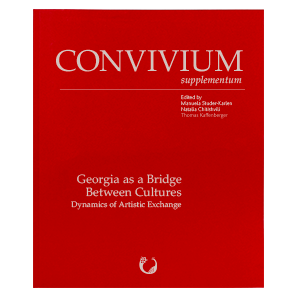
CONVIVIUM
Supplementum
Georgia as a Bridge Between Cultures. Dynamic of Artistic Exchange
Edited by
Manuela
& Thomas Kaffenberger
2021
CONVIVIUM Supplementum
Georgia as a Bridge Between Cultures.
Dynamic of Artistic
Exchangen
Manuela Studer-Karlen
Georgia as a Bridge Between Cultures. Dynamics of Artistic Exchange
Ivan Foletti — Belting Before Belting. From Moscow, to Constantinople, and to Georgia
Hans Belting — The Painter Manuel Eugenikos from Constantinople, in Georgia
Ekaterine Gedevanishvili — The Khakhuli Dome Decoration. Eschatological and Historical
Contexts /
Irene Giviashvili — Liturgy and Architecture. Constantinopolitan Rite and Changes in the
Architectural
Planning of Georgian Churches / Natalia Chitishvili —
Altars in Medieval Georgian Churches. Preliminary Notes on Their Arrangement,
Decoration, and the Rite of Consecration / Thomas Kaffenberger —
Liminal Spaces of Memory, Devotion and Feasting? Porch-Chapels
in Eleventh-Century Georgia / Manuela Studer-Karlen —
The Monastery of the Transfiguration in Zarzma. At the Intersection of Biblical
Narration and Liturgical Relevance / Irma Mamasakhlisi —
The Last Judgment in Medieval Georgian Art (Tenth–Thirteenth Centuries)
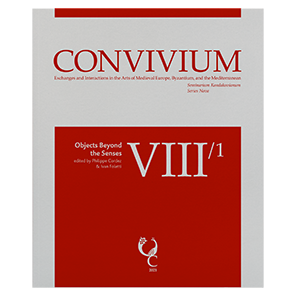
CONVIVIUM VIII/1
Objects Beyond the Senses
Edited by Philippe Cordez & Ivan Foletti
2021
CONVIVIUM VIII/1
Objects Beyond the Senses
Philippe Cordez & Ivan Foletti –
A Convivium with Herbert L. Kessler. Sharing Objects, Sensory Experiences,
and Medieval Art History
Vincent Debiais & Elina Gertsman —
Au-delà des sens, l’abstraction / Nathan Dennis —
Optical Games and Spiritual Frames. A Reassessment of Imitation-Marble
Mosaics in Late Antique North Africa /
Francesca Dell’Acqua —
Beyond Human Grasp. The Funeral of the Virgin on the
“Wirksworth Stone” (Derbyshire) / Philippe Cordez —
Golgotha im Kopf. Karl der Kahle und die karolingischen Elfenbeinkämme /
Iva Adámková — The Sense of Sight in the Prologues of Theophilus Presbyter’s De diversis
artibus / Marc Sureda i Jubany —
Faithful Crosses. On the Survival of an Early Type of Goldsmith’s Cross
in Late Medieval Catalonia /
Panayota Volti — Saints émaciés, reliques et images au Moyen Âge tardif. Dynamiques visuelles
et perspective du salut / Bissera V. Pentcheva —
Divine Anamorphosis. The Phenomenality of Gold and Chant in
a Fourteenth-Century Antiphonary from Santa Maria sopra Porta
Anne-Orange Poilpré —
L’Antiquité et les origines de la narrativité chrétienne en images dans l’œuvre
d’Herbert L. Kessler. Un parcours intellectuel / Adrien Palladino —
Herbert L. Kessler. A Visionary Interpreter of Medieval Visual Culture
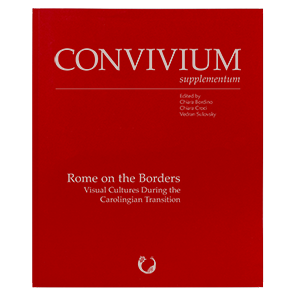
CONVIVIUM
Supplementum
Rome on the Borders. Visual Cultures During the Carolingian Transition
Edited by Chiara Bordino, Chiara Croci & Vedran Sulovsky
2020
CONVIVIUM Supplementum
Rome on the Borders. Visual Cultures
During the Carolingian
Transition
Chiara Bordino & Chiara Croci
Rome on the Borders. Visual Cultures During the Carolingian Transition
Ivan Foletti & Sabina Rosenbergová —
Rome between Lights and Shadows. Reconsidering “Renaissances”
and “Decadence” in Early Medieval Rome
/
Andrea Antonio Verardi —
Narrare il passaggio, guidare la transizione. Strategie di comunicazione
papale nella prima metà del secolo viii /
Ernesto Sergio Mainoldi —
The Representation of Sacred Royalty in the codices of Charles the Bald
and the Furtherance of Romanness in the Late Carolingian Age
/ Philipp Winterhager —
A Pope, a King, and Three Apses. Architecture and Prestige in Eighth-Century
Rome and Beyond / Chiara Croci —
Una questione romana? La (ri)nascita della pittura narrativa martiriale
nell’alto Medioevo: altri spunti da Santa Prassede / Dirk Krausmüller —
In Defense of Tall Tales. Methodius of Constantinople’s Literary Activity
during His Stay in Rome / Chiara Bordino —
Images of Saints and Their Relics. Debates on Representation and Worship
in the Ninth Century between Constantinople, Rome, and the Carolingians /
Maria Lidova —
Maria Regina. Transformations of an Early Byzantine Image in Late
Eighth-Century Rome / Martin F. Lešák —
Stational Liturgy and Local History. Leo iii’s Apse Mosaic at Santa Susanna /
Antonella Ballardini & Maurizio Caperna —
A Santa Prassede, nella Gerusalemme nuova. L’assetto architettonico dello
spazio absidale, l’arredo e la disposizione liturgica /
Giulia Bordi & Carles Mancho —
Con i santi nella Gerusalemme nuova. Il presbiterio di Santa Prassede
tra pittura e mosaici
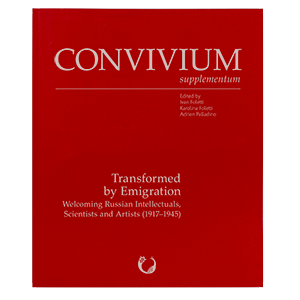
CONVIVIUM
Supplementum
Transformed by Emigration. Welcoming Russian Intellectuals, Scientists and Artists
(1917–1945)
Edited by Ivan Foletti, Karolina Foletti & Adrien Palladino
2020
CONVIVIUM Supplementum
Transformed by Emigration. Welcoming Russian Intellectuals,
Scientists and Artists
(1917–1945)
Ivan Foletti
After Kondakov. The Heritage of Russian Emigration in the Czech Lands
Ekaterina Shashlova —
Russian Philosophers in France in the Interwar Period. A Review of the Studies
of Emigrant Philosophers
/
Juliette Milbach —
Zinaida Serebrjakova in Paris. Iconographic Analysis of a Russian in Exile /
Karolina Foletti —
Presenting Russia to the West. Helene Iswolsky, Russian Catholic Émigré Intellectual
/ Cécile Pichon-Bonin —
The Russian Illustrators of the Père Castor. Russian Mediators in France
of the Concept of Construction in Art and Pedagogy in the 1930s / Jordan Ljuckanov —
The Russian Émigré Community in Interwar Bulgaria. Attempt at a Typology
of Transformations, with Focus on the “Aestheticization” of Newspaper / Adrien Palladino
— Transforming Medieval Art from Saint Petersburg to Paris. André Grabar’s Life
and Scholarship between 1917 and 1945
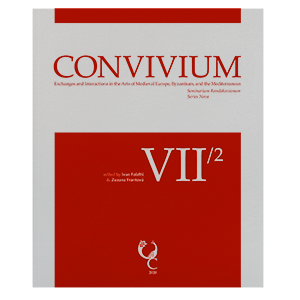
CONVIVIUMVII/2
Edited by Ivan Foletti & Zuzana Frantová
2020
CONVIVIUM VII/2
Ivan Foletti & Zuzana Frantová —
Exchanges and Interactions in a Time of Pandemic
Gil Fishhof —
The Meanings of Byzantium. The Church of Abu-Ghosh (Emmaus) and the
Meanings of Byzantine Pictorial Language in the Latin Kingdom of Jerusalem /
Armin F. Bergmeier —
Die Ausmalungen der Wiener Virgilkapelle. Die visuelle Kultur in Byzanz,
im Kaukasus, in Syrien und Nordmesopotamien /
Nikolaos Vryzidis —
Between Three Worlds. The “Veneto-Saracenic” Candleholder of Docheiariou Monastery /
Mzia Janjalia —
Cross-Cultural Features in Medieval Art. The Case of the Early Fourteenth-Century
Wall Paintings at the Monastery of the Holy Cross in Jerusalem /
Matko Matija Marušić —
Painted Crosses and the Trajectories of Medieval Image Captions. Evidence
from Thirteenth-Century Zadar and Beyond /
Ilaria Molteni & Irene Quadri —
Trame di storia. Il mosaico di Otranto, le cronache universali e l’immagine della regalità /
Vera-Simone Schulz —
Artistic Exchanges Across Afro-Eurasia. A Global Taste for Metal Artifacts
from Mamluk Syria and Egypt in Italy, West Africa, and China in the Fourteenth
and Fifteenth Centuries
Roundtable. Medieval Art Today, Why? Ivan Foletti & Adrien Palladino eds
Michele Bacci —
Mat Immerzeel, The Narrow Way to Heaven. Identity and Identities in the Art of Middle
Eastern Christianity, Orientalia Lovaniensia Analecta 259, Leuven: Peeters 2017 /
Ivan Foletti —
Francesca Dell’Acqua, Iconophilia. Politics, Religion, Preaching, and the Use of Images
in Rome, c. 680–880, London / New York: Routledge 2020 /
Adrien Palladino —
Armin F. Bergmeier, Visionserwartung. Visualisierung und Präsenzerfahrung des
Göttlichen in der Spätantike, Wiesbaden: Reichert Verlag 2017
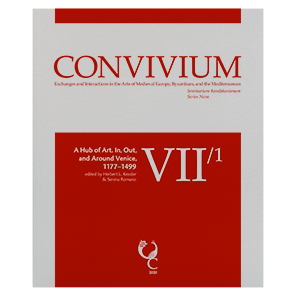
CONVIVIUM VII/1
A Hub of Art. In, Out, and Around Venice, 1177–1499
Edited by Herbert L. Kessler & Serena Romano
2020
CONVIVIUM VII/1
A Hub of Art. In, Out, and Around Venice, 1177–1499
Xenia Muratova — unvergesslich. Obituary by Peter Cornelius Claussen
Herbert L. Kessler & Serena Romano —
A Hub of Art. In, Out, and Around Venice, 1177–1499
Simone Piazza —
Mosaici d’oro nelle chiese di Venezia (ix–xiv secolo).
Luci sull’ingente patrimonio perduto /
Ludovico V. Geymonat & Lorenzo Lazzarini —
A Nativity Cycle for the Choir Screen of San Marco, Venice /
Anne Dunlop — Mongol Eurasia in the Trecento Veneto /
Andrea Missagia —
Oreficerie veneziane a smalto traslucido (secoli xiv–xv). Immissioni,
importazioni e produzioni locali, novità, continuità e abbandoni /
Michele Bacci —
Greek Madonnas and Venetian Fashion
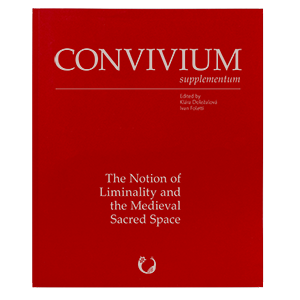
CONVIVIUM
Supplementum
The Notion of Liminality and the Medieval Sacred Space
Edited by Klára Doležalová & Ivan Foletti
2019
CONVIVIUM Supplementum
The Notion of Liminality and the Medieval Sacred Space
Klára Doležalová & Ivan Foletti —
Liminality and Medieval Art. From Space to Rituals and to the Imagination
Ivan Foletti & Katarína Kravčíková —
Closed Doors as Bearers and Constructors of Images. Santa Sabina in Rome
and Notre Dame du Puy /
Sible De Blaauw & Klára Doležalová —
Constructing Liminal Space? Curtains in Late Antique and Early Medieval Churches /
Vlad Bedros & Elisabetta Scirocco —
Liturgical Screens, East and West. Liminality and Spiritual Experience /
Chiara Croci —
The Depiction of the Acta Martyrum During the Early Middle Ages. Hints
from a Liminal Space, the Transept of Santa Prassede in Rome (817–824) /
Jan Klípa & Eliška Poláčková —
Tabulae cum portis, vela, cortinae and sudaria. Remarks on the Liminal Zones
in the Liturgical and Para-Liturgical Contexts in the Late Middle Ages /
John Mitchell & Nicholas Pickwoad —
“Blessed Are the Eyes Which See Divine Spirit Through the Letter’s Veil.”
The Book as Object and Idea
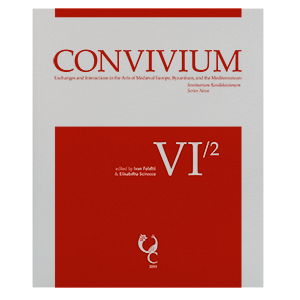
CONVIVIUM VI/2
Edited by Ivan Foletti & Elisabetta Scirocco
2019
CONVIVIUM VI/2
Ivan Foletti & Elisabetta Scirocco —
Environment, Democracy, and Convivium
Andrew Griebeler —
Aeizōon to amaranton. Intercultural Collaboration in a Late Byzantine Nature Study /
Ute Dercks —
“… dove l’epidemia fotografica si è diffusa”. Architectural Photographs
in Nineteenth-Century Sicily /
Giampaolo Distefano —
Una mitra angioina perduta poi ritrovata. Il problema dello smalto
de plique tra Parigi e Napoli nel Trecento /
Chiara Bordino —
The Transfiguration and the Eikon of Christ. From Eusebius’ Letter
to Constantina to the Iconoclast Era /
Sarah K. Kozlowski —
Trecento Panel Painting Between the Courts of Naples and Hungary. A Hypothesis
for Simone Martini’s Saint Ladislaus and a Painting of Christ on the Cross /
Lev Kapitaikin —
Human Flight on a Fabulous Superbird. Uplifting Images Between Sicily and Khurasan (part ii.) /
Michele Bacci —
The Rediscovery of a Byzantine Capital, Reused as a Baptismal Font, in the Nativity Church, Bethlehem
/
Adrien Palladino —
The Wolfgang Born – Kondakov Institute Correspondence. Art History, Freedom,
and the Rising Fear in the 1930s
Chiara Croci —
M. Wegener-Rieckesmann, Bischof Gaudiosus, die heilige Restituta und die ecclesia
Neapolitana. Zu den Zeugnissen vandalenzeitlicher Exilanten und dem kulturellen
nordafrikanischen Einfluss in Neapel sowie zur Entwicklungsgeschichte der örtlichen
Bischofskirche zwischen dem 4. und 9. Jahrhundert, Oberhausen: Athena-Verlag 2019 /
Adrian S. Hoch —
The Art of Medieval Hungary, edited by Xavier Barral i Altet, Pál Lövei, Vinni Lucherini
and Imre Takács, Rome: Viella 2018 /
Haig Utidjian —
Armenia. Art, Religion, and Trade in the Middle Ages, edited by Helen C. Evans, New York:
The Metropolitan Museum of Art 2018
Christina Maranci, The Art of Armenia. An Introduction, New York: Oxford University Press 2018
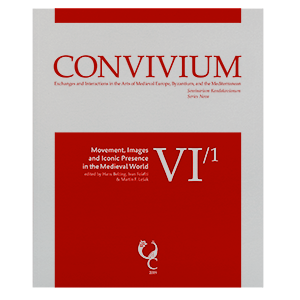
CONVIVIUM VI/1
Movement, Images and Iconic Presence in the Medieval World
Edited by Hans Belting, Ivan Foletti & Martin F. Lešák
2019
CONVIVIUM VI/1
Movement, Images and Iconic Presence in the Medieval World
Hans Belting, Ivan Foletti & Martin F. Lešák —
The Movement and the Experience od "Iconic Presence". An Introduction
Michele Bacci — Site-Worship and the Iconopoietic Power of Kinetic Devotions / Martin
F. Lešák — Sacred Architecture and the Voice of Bells in the Medieval Landscape. With the Case
Study of Mont-Saint-Michel
Ivan Foletti — Dancing with Sainte Foy. Movement and the Iconic Presence /
Adrien Palladino — Captivated by Gaze. Sculpture as Witness at the Lausanne Cathedral’s Porch /
Tina Bawden — The Mobile Viewer at the Medieval Church Entrance
Vladimir Ivanovici — Iconic Presences. Late Roman Consuls as Imperial Images /
Johanna Abel – Ritual Drama and Dramatic Ritual in Spanish Sacramental Plays. La Margarita Preciosa
(1616) Between Procession and Stage
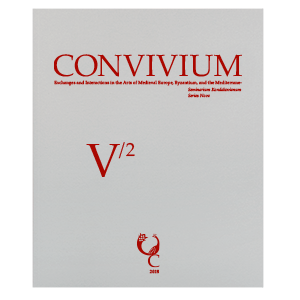
CONVIVIUM V/2
Edited by Ivan Foletti & Elisabetta Scirocco
2018
CONVIVIUM V/2
Ivan Foletti & Elisabetta Scirocco —
Reflections on Mobility, the Roots and Prospects of European Culture
Hans Belting — A Venetian Artist at the Ottoman Court. An Encounter of Two Worlds /
Mzia Janjalia in collaboration with Marina Bulia —
Trend versus Cultural Context in Medieval Art. The Case of the Kirants Paintings /
Daniela Rywiková —
Virtues and Vices Reformed? Visual Pastoralia in Fourteenth-Century Bohemian Art /
Anita Paolicchi —
Hoc brachium est beati Iohannis Baptistae. Osservazioni sulla provenienza della reliquia di San
Giovanni Battista conservata a Siena /
Sarah S. Wilkins —
Countenances as Lightning. The Materiality of the Noli me tangere Fresco in Assisi /
Rafca Y. Nasr —
The Virgin Blachernitissa of Barghoun (Lebanon). Image of the Altar or the Priest Exposing the Host
/
Chiara Croci —
Una cosmografia Cristiana? Le radici astronomiche della cupola del perduto edificio martiriale di San
Prisco presso Capua (v sec.)
Thomas Kaffenberger —
A Newly Discovered Church in Cyprus. Remarks on New Architectural Forms’ Modes of Transmission in
Sixteenth-Century Mediterranean /
Ivan Foletti —
Vivre le pèlerinage (médieval). Une expérience corporelle
Armin F. Bergmeier — Hagia Sophia. Sound, Space, and Spirit in Byzantium, by Bissera V. Pentcheva,
University Park (pa), The Pennsylvania State University Press 2017 /
Dorothy F. Glass —
E la Parola si fece bellezza (Atti del Convegno internazionale sugli amboni istoriati toscani, 19–28
maggio 2016), edited by Timothy Verdon and Giovanni Serafini, Florence, Mandragora 2017 /
Adrian S. Hoch — Images and Words in Exile: Avignon and Italy during the First Half of the 14th
Century, edited by Elisa Brilli, Laura Fenelli and Gerhard Wolf, Florence, sismel – Edizioni del
Galluzzo
2015

CONVIVIUM V/1
The Italian South: Transcultural Perspectives 500–1500
Edited by Elisabetta Scirocco & Gerhard Wolf
2018
CONVIVIUM V/1
Elisabetta Scirocco & Gerhard Wolf — The Italian South: Transcultural Perspectives
Ruggero Longo — The First Norman Cathedral in Palermo. Robert Guiscard’s Church of the Most Holy
Mother of God With an Addendum by Jeremy Johns /
Eve Borsook — A Solomonic Throne for Salerno Cathedral? /
Antonino Tranchina — Revealing the Emir’s God. The Arabic Inscription of the Dome of La Martorana
(Palermo) /
Dana Katz — From Norman to Hohenstaufen Rule of Sicily. The Representation of Matthew of Ajello in the
Liber ad honorem Augusti and the Church of La Magione in Palermo /
Francesco Gangemi — Hic situs est sanctus. L’arca di San Basso a Termoli, fra testo e contesto
/
Roberto Rotondo — Echi bizantini nell’architettura rupestre pugliese. L’esempio della chiesa di Lama
d’Antico a Fasano (Brindisi) /
Manuela De Giorgi — Interazioni del sacro. Forme e modelli di culto nella pittura bizantina di Puglia
/
Kristen Streahle — St George and the Trinacrian Rebellion. Art in Sicily During the Later Crusades
/
Ulrike Ritzerfeld — Santa Caterina a Galatina. Un monumento per la “latinizzazione” della Puglia
greco-bizantina o per le ambizioni autonomistiche dei Del Balzo Orsini? /
Gianluca del Monaco — Illuminated Bolognese Legal Manuscripts and Angevin Regnum Siciliae. The
Advocates Volumen Parvum in Edinburgh (nls, Advocates ms 10.1.4 ([i]) /
Renata Novak Klemenčič — Artistic Exchange Between Dubrovnik and Naples in the Time of Alfonso
d’Aragona /
Maria Vittoria Spissu — Permeabilità e specificità / appropriazioni e identità (1455–1515 ca.).
L’affermazione del linguaggio flandro-mediterraneo nel regno catalanoaragonese di Sardegna /
Gabriella Cianciolo Cosentino — The “Mongrel Style”. One Century of Use and Abuse of Sicilian
Syncretism
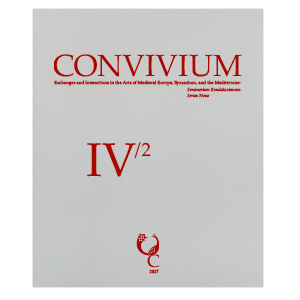
CONVIVIUM IV/2
Edited by Clario Di Fabio & Serena Romano
2017
CONVIVIUM IV/2
Clario Di Fabio & Serena Romano
Chiara Croci — “Oriente o Roma”? Napoli. La pluralità stilistica dei mosaici del battistero di San
Giovanni in Fonte (400 ca) tra “modes” e pratiche di cantiere /
Francesco Capitummino — L’abbazia normanna di San Giorgio a Gratteri. La prima fondazione cistercense
nel Regno di Sicilia? /
Francesca Girelli — Local Traditions and Itinerant Artists? The Crucifixes of Auvergne and Wooden
Sculpture in France during the Late Romanesque Period /
Clario Di Fabio — I Musici di Reims e il corpo come spettacolo. Geni mutanti nello “stile monumentale”
circa il 1235 /
Gili Shalom — Reliving the Past in the Present: Martyrdom, Baptism, Coronation, and Participation in
the Portal of the Saints at Reims /
Michele Tomasi — Style de cour, art de cour : historiographie et méthode (encore une fois à partir de
Robert Branner et saint Louis) /
Nathalie Roman — Collaborations artistiques et leadership : le cas du Bréviaire de Blanche de France
(Rome, Biblioteca Apostolica Vaticana, ms Urb. lat. 603) /
Kristýna Rendlová — An Afterglow of Byzantium in Ottoman Illustrated Manuscripts: The Case of the
Pictorial Representation of Architecture /
Nikolaos Vryzidis — Towards a History of the Greek hil‘at: An Interweaving of Byzantine and Ottoman
Traditions
Vladimir Agrigoroaei — Le manuscrit lat. 15675 de la Bibliothèque nationale de France, source des
inscriptions de la chapelle Saint-Étienne de Westminster /
Francesca Dell’Acqua, Ivan Foletti, Vincenzo Gheroldi, Beatrice Leal, Sara Marazzani & John Mitchell —
Echoes of Milan in Ninth-Century Langobardia Minor? Preliminary Findings on the Painted Programme of
S. Ambrogio alla Rienna, Montecorvino Rovella (Salerno)
Serena Romano — Ricerche a Santa Maria Novella. Gli affreschi ritrovati di Bruno, Stefano e gli altri,
a cura di Anna Bisceglia, Firenze, Mandragora 2016
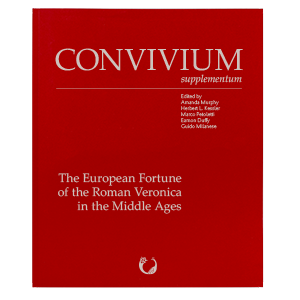
CONVIVIUM
Supplementum
The European Fortune of the Roman Veronica in the Middle Ages
Edited by A. Murphy, H. L. Kessler, M. Petoletti, E. Duffy & G. Milanese
2017
CONVIVIUM Supplementum
The European Fortune of the Roman Veronica in the Middle Ages
Herbert L. Kessler — Introduction: The Literary Warp and Artistic Weft of Veronica’s Cloth /
Zbigniew Izydorczyk — The Cura Sanitatis Tiberii a Century after Ernst von Dobschütz /
Rémi Gounelle & Céline Urlacher-Becht — Veronica in the Vindicta Salvatoris /
Barry Windeatt — ‘Vera Icon’? The Variable Veronica of Medieval England /
Federico Gallo — De sacrosanto sudario Veronicae by Giacomo Grimaldi. Preliminary Investigations
/
Nigel Morgan — ‘Veronica’ Images and the Office of the Holy Face in Thirteenth-Century England
Aden Kumler — Signatis… vultus tui: (Re) impressing the Holy Face before and after the European Cult
of the Veronica /
Rebecca Rist — Innocent III and the Roman Veronica: Papal pr or Eucharistic Icon? /
Guido Milanese — Quaesivi vultum tuum. Liturgy, figura and Christ’s Presence /
Jörg Bölling — Face to Face with Christ in Late Medieval Rome. The Veil of Veronica in Papal Liturgy
and Ceremony /
Uwe Michael Lang — Origins of the Liturgical Veneration of the Roman Veronica
Gisela Drossbach — The Roman Hospital of Santo Spirito in Sassia and the Cult of the Vera Icon
/
Kathryn M. Rudy — Eating the Face of Christ. Philip the Good and his Physical Relationship with
Veronicas /
Étienne Doublier — Sui pretiossisimi vultus Imago: Veronica e prassi indulgenziale nel XIII e
all’inizio del XIV secolo /
Marc Sureda i Jubany — From Holy Images to Liturgical Devices. Models, Objects and Rituals around the
Veronicae of Christ and Mary in the Crown of Aragon (1300–1550) /
Chiara Di Fruscia — Datum Avenioni. The Avignon Papacy and the Custody of the Veronica
Hanneke van Asperen — ‘Où il y a une Veronique attachiée dedens’. Images of the Veronica in Religious
Manuscripts, with Special Attention for the Dukes of Burgundy and their Family /
Marco Petoletti & Angelo Piacentini — The Veronica of Boniface of Verona /
Stefano Candiani — The Iconography of the Veronica in the Region of Lombardy: 13th–14th Centuries
/
Raffaele Savigni — The Roman Veronica and the Holy Face of Lucca: Parallelism and Tangents in the
Formation of their Respective Traditions /
Raffaella Zardoni & Emanuela Bossi & Amanda Murphy — The Iconography of the Roman Veronica. From the
Repertoires of Karl Pearson to Veronica Route
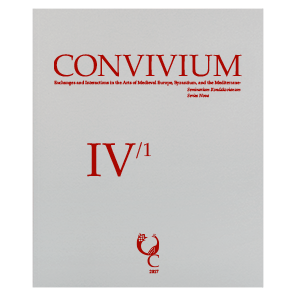
CONVIVIUM IV/1
Medieval Art History in Prison
Edited by Xavier Barral i Altet & Ivan Foletti
2017
CONVIVIUM IV/1
Medieval Art History in Prison
Xavier Barral i Altet, Ivan Foletti – Medieval Art History in Prison
Vinni Lucherini — La rivista Corvina. L’uso politico dell’arte medievale in Ungheria tra le due guerre
mondiali /
Gabriella Cianciolo Cosentino — Il Medioevo nella propaganda nazista. Artigianato e architettura nel
Terzo Reich /
Adrien Palladino — Della dissimulazione onesta: Richard Delbrueck, an "Image" of Late Antiquity at the
Dawn of National Socialism /
Eva Staurenghi — Friedrich Wilhelm Deichmann (1909–1993) e il Deutsches Archäologisches Institut di
Roma durante il Nazionalsocialismo /
Mariana Aguirre — From Imitazione to Creazione: Lionello Venturi, Medieval Art, and Fascism /
Ileana Burnichioiu — Concepts Distorted by Ideologies. A View on Medieval "Romanian" Art (1945–1989)
/
Vladimir Ivanovici — The Prison of the Mind. Growing up with Myths in Communist Romania /
Francesco Lovino — Communism vs. Seminarium Kondakovianum /
Klára Benešovská — Charles IV 1978–2016: Reviewing the Ideological Background of the Exhibitions and
Conferences in 1978
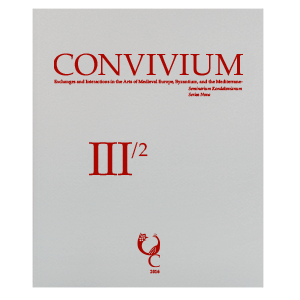
CONVIVIUM III/2
Edited by Serena Romano & Elisabetta Scirocco
2016
CONVIVIUM III/2
Serena Romano & Elisabetta Scirocco — Mediterranean Dialogues across Time and Space
Avinoam Shalem — Passages. Meyer Schapiro's Early Travels and the Uniting Mediterranean Sea /
Athanasios Semoglou — La version "théophanienne" de la Transfiguration. Elenchos d'une hypothèse sur
les origines d'un schéma iconographique /
Stefano D'Ovidio — Alla ricerca di un Medioevo perduto. La basilica di San Giorgio Maggiore a Napoli
(IV-XVII secolo) /
Anastasia Moskvina — Liturgy and Movement. The Complex Associated with St Stephen's Church at Umm
er-Rasas, Jordan /
Lev Kapitaikin — Human Flight on a Fabulous Superbird. Uplifting Images between Sicily and Khurasan
/
Serena Romano — Wonderful Rusuti. Nemo propheta in patria /
Ilaria Molteni — Lo spazio del foglio. Sulla mise en page dei romanzi cavallereschi di origine
italiana (XIII-XIV secolo) /
Laura Zamparo — Il frontespizio con angeli in età tardoantica. Alcune considerazioni sulle sue
trasformazioni ottoniane
Geraldine Leardi — Simona Moretti, Roma Bizantina. Opere d’arte dall’impero di Costantinopoli nelle
collezioni romane, Roma: Campisano Editore 2014;
Giovanni Gasbarri, Riscoprire Bisanzio. Lo studio dell’arte bizantina a Roma e in Italia tra Ottocento
e Novecento, Roma: Viella 2015 /
Maria Lidova — Michele Bacci, The Many Faces of Christ. Portraying the Holy in the East and West, 300
to 1300, London: Reaktion Books 2014 /
Marco Rossi — Laura Chinellato, Arte longobarda in Friuli: l’ara di Ratchis a Cividale, Udine: Forum
2016 /
Gerardo Boto Varela — San Tommaso ad Acquanegra sul Chiese. Storia, architettura e contesto figurativo
di una chiesa abbaziale romanica, Fabio Scirea ed., Mantova: sap
Società Archeologica s.r.l. 2015 /
Michele Tomasi — The Salerno Ivories. Objects, Histories, Contexts, Francesca Dell’Acqua, Anthony
Cutler, Herbert L. Kessler, Avinoam Shalem, Gerhard Wolf eds, Berlin: Gebr. Mann Verlag 2016 /
Gaetano Curzi — Stefano D’Ovidio, Scultura lignea del Medioevo a Napoli e in Campania, Napoli: Società
Napoletana di Storia Patria 2013 / Laura Fenelli —
Joanna Cannon, Religious Poverty, Visual Riches. Art in the Dominican
Churches of Central Italy in the Thirteenth and Fourteenth Centuries,
New Haven, ct: Yale University Press 2013;
Caroline Bruzelius, Preaching, Building, and Burying. Friars and
the Medieval City, New Haven/London: Yale University Press 2014
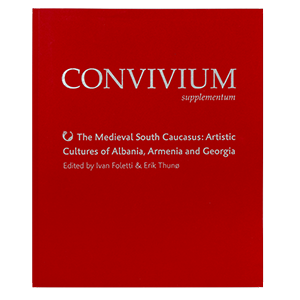
CONVIVIUM
Supplementum
The Medieval South Caucasus. Artistic Cultures of Albania, Armenia and Georgia
Edited by Ivan Foletti
& Erik Thunø
2016
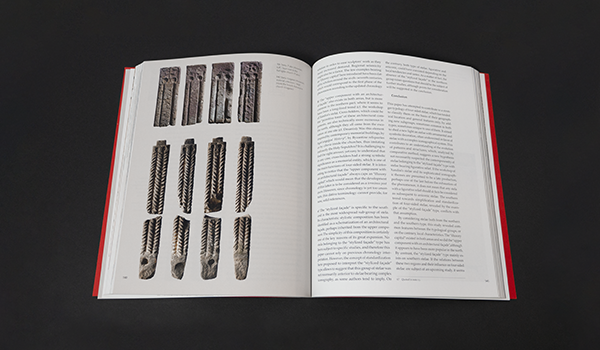
CONVIVIUM Supplementum
The Medieval South Caucasus. Artistic Cultures of Albania, Armenia and Georgia
Ivan Foletti, Erik Thunø — The Artistic Cultures of the Medieval South Caucasus. Historiography, Myths
and Objects
Ivan Foletti — The Russian View of a “Peripheral” Region. Nikodim P. Kondakov and the Southern
Caucasus /
Francesco Lovino — Southern Caucasus in Perspective. The Scholarly Debate through the Pages of
Seminarium Kondakovianum and Skythika (1927–1938) /
Patricia Blessing — Medieval Monuments from Empire to Nation-State: Beyond Armenian and Islamic
Architecture in the South Caucasus (1180–1300) /
Christina Maranci — The Monument and the World: Zuart’noc’ and the Problem of Origins /
Antony Eastmond — Greeks Bearing Gifts: Byzantine Enamels and Diplomacy between Byzantium and Georgia
/
Marina Bulia and Mzia Janjalia — Medieval Art and Modern Approaches: A New Look at the Akhtala
Paintings /
Sipana Tchakerian — Toward a Detailed Typology: Four-Sided Stelae in Early Christian South Caucasus
/
Erik Thunø — Cross-Cultural Dressing: the Medieval South Caucasus and Art History /
Annegret Plontke-Lüning — Early Christian Churches in Caucasian Albania /
Lynn Jones — Relics, Woodworking and the Skins of Reptiles: the Material Culture of Caucasian Albania
/
Marina Kevkhishvili — Svanetien – das letzte Mittelalter Europas /
Michele Bacci — Echoes of Golgotha. On the Iconization of Monumental Crosses in Medieval Svanet’i
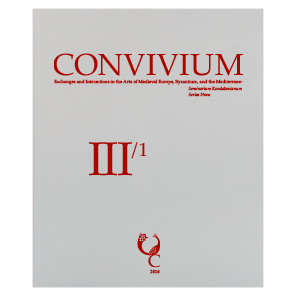
CONVIVIUM III/1
Classical Heritage & Medieval Innovation: Illustrated Texts from Late Antiquity to the Early Middle Ages
Edited by Anna Boreczky
2016
CONVIVIUM III/1
Ivan Foletti — Open to Change, Faithful to Precepts
Illustrated Texts from Late Antiquity to the Early
Middle Ages
Anna Boreczky — Introduction: Classical Heritage & Medieval Innovation
Herbert L. Kessler — The Christianity of Carolingian Classicism /
Martin Büchsel — Formgenese karolingischer Elfenbeine. Strukturen der Antikenrezeption /
Ádám Bollók — Rediscovering Antiquities and Reviving the Past. Byzantium during the 9th and 10th
Centuries /
Anna Boreczky — The Illustrated Life of Apollonius and Tarsia. A “Papyrus-style” Narrative in Ottonian
Art /
Xavier Barral i Altet — Au sujet des architectures de l’Apollonius pictus. Autour de la transmission
de modèles à travers le Haut Moyen Âge /
András Németh — Continuous Narration through Scenic Depictions. The Apollonius pictus /
Giulia Orofino — La storia nei margini. I disegni dell’Orosio Vat. lat. 3340 tra eredità tardoantica e
creazione medievale /
Milagros Guardia — Iratusque est Cain vehementer… Cain Being Wroth: a Gap in the Iconographic
Transmission in the Pyrenees /
Béla Zsolt Szakács — Archaism, Imitation, Provincialism? Notes on the Murals of Kosztolány / Kostoľany
pod Tribečom /
Massimo Bernabò & Grigory Kessel — A Syriac Four Gospel Book in Diyarbakır
Francesco Lovino — Leafing through Seminarium Kondakovianum, i. Studies on Byzantine Illumination
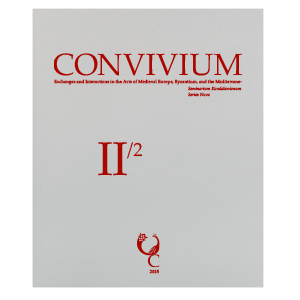
CONVIVIUM II/2
Edited by Michele Bacci & Ivan Foletti
2015
CONVIVIUM II/2
Michele Bacci & Ivan Foletti — The World of Convivium : Between Post-modernism and New Discoveries
Stefano Riccioni — Colores rethorici: réflexions sur la rhétorique de la couleur dans les mosaïques de
Rome du XIIe siècle /
Michele Bacci — Old Restorations and New Discoveries in the Nativity Church, Bethlehem /
Maria Lidova — The Imperial Theotokos: Revealing the Concept of Early Christian Imagery in Santa Maria
Maggiore in Rome /
Federica Volpera — Tra Oriente e Occidente: riflessioni su un dipinto inedito già nella collezione dei
Marchesi d’Invrea (Varazze) /
Dragoş Gh. Năstăsoiu — Patterns of Devotion and Traces of Art: the Diplomatic Journey of Queen
Elizabeth Piast to Italy in 1343–1344 /
Glenn Peers — Transfiguring Materialities: Relational Abstraction in Byzantium and its Exhibition
/
Geraldine Leardi — Prêt-à-Byzantiner: moda, modi, mondi bizantini
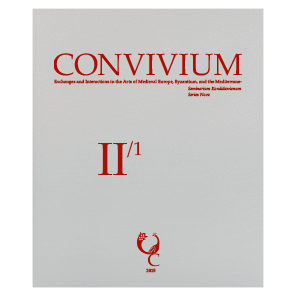
CONVIVIUM II/1
Many Romes: Studies in Honor of Hans Belting
Edited by Ivan Foletti & Herbert L. Kessler
2015
CONVIVIUM II/1
Ivan Foletti & Herbert L. Kessler — Hans Belting. A Bridge to Many Romes
Jean-Claude Schmitt — Rome, Trier, Kiev /
Tanja Michalsky — Grata pictura and mapa duplex. Paolino Minorita’s Late Medieval Map of Rome as an
Epistemological Instrument of a Historiographer /
Ivan Foletti — Dio da dio: la maschera di Cristo, Giove Serapide e il mosaico di Santa Pudenziana a
Roma /
Dieter Blume — Rom im Exil – Die fiktiven Räume des Matteo Giovanetti in Avignon /
Simone Piazza — Un unicum fra Oriente e Occidente: l’immagine della Trasfigurazione in San Gabriele ad
Airola, Benevento /
Francesca Dell’Acqua — Porta coeli: the Annunciation as Threshold of Salvation /
Michele Bacci — A Power of Relative Importance: San Marco and the Holy Icons /
Shigebumi Tsuji — The Starry Night. Art before the Era of the Icon /
Ádám Bollók — Byzantium on the Theiss: of Byzantine Diplomacy, the Emperor’s Image and the Avars
/
Branislav Cvetković & Cynthia Hahn — Imperial Aspirations: Relics and Reliquaries of the Byzantine
Periphery /
Jean-Michel Spieser — Le monastère du Pantocrator à Constantinople: le typikon et le monument/
Xavier Barral i Altet — Un programme iconographique occidental pour le pavement médiéval de l’église
du Christ Pantocrator de Constantinople /
Alessandro Taddei — A Neglected Mosaic in the South Gallery of Hagia Sophia, Constantinople /
Ondřej Jakubec — Roman References in Early Modern Central European Confessional Architecture /
Serena Romano — Picasso e il vero volto dell’Arlecchino
Collected by Alžběta Filipová, Andrien Palladino & Pavla Tichá — Biography and Bibliography of Hans
Belting
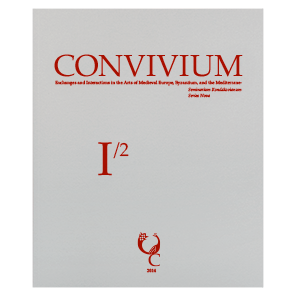
CONVIVIUM I/2
Edited by Herbert L. Kessler & Elisabetta Scirocco
2014
CONVIVIUM I/2
Bissera V. Pentcheva — Mirror, Inspiration, and the Making of Art in Byzantium /
Alexei Lidov — The Catapetasma of Hagia Sophia and the Phenomenon of Byzantine Installations /
Michitaka Suzuki — Icons in Japan Painted by Rin Yamashita: Anonymity and Materiality /
Lucy O’Connor — Christ in Majesty on a Late Antique eulogia token in the British Museum /
Vincent Debiais — Carolingian Verse Inscriptions and Images: From Aesthetics to Efficiency /
Barbara Baert — Pentecost in the Codex Egberti (ca. 980) and the Benedictional of Robert of Jumièges
(late tenth century). The Visual Medium and the Senses /
Assaf Pinkus and Michal Ozeri — From Body to Icon: The Life of Sts Peter and Paul in the Murals of S.
Piero a Grado (Pisa)
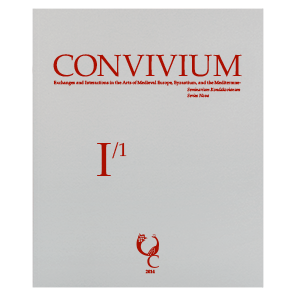
CONVIVIUM I/1
Circulation as a Factor of Cultural Aggregation: Relics, Ideas and Cities in the Middle Ages
Edited by Klara Benešovská, Ivan Foletti & Serena Romano
2014

CONVIVIUM I/1
Circulation as a Factor of Cultural Aggregation: Relics, Ideas and Cities in the Middle
Ages
Ivan Foletti — De Nikodim Kondakov, au Seminarium Kondakovianum et à Convivium / From Nikodim Kondakov
at Seminarium Kondakovianum and Convivium
Klara Benešovská, Ivan Foletti & Serena Romano — Circulation as a Factor of Cultural Aggregation
Alessandro Taddei — A Journey of Men and Names. Constantinople’s Kosmidion and its italian Replicas
/
Ivan Foletti — Germigny-des-Prés, il Santo Sepolcro e la Gerusalemme Celeste /
Klara Benešovská — De la circulation des « locis sanctis » - Le Mont Sion à Prague
Alžběta Filipová — Circulation of Blood, Clay, and Ideas: The Distribution of Milanese Relics in the
4th and 5th Centuries /
Clario di Fabio — Reliquie e reliquiari dal mare a Genova e in Liguria fra la prima Crociata e il
Duecento /
Vinni Lucherini — Smembrare il corpo del re e moltiplicare le reliquie del santo: il caso di Luigi IX
di Francia /
Denise Zaru — De Prague à la Lombardie. Reliques et culte des saints durant la deuxième moitié du XIVe
siècle
Valentine Giesser — De la côte est de l’Adriatique à Rome ou quand l’image accompagne la relique.
Réflexions autour de la mosaïque de la chapelle San Venanzio au baptistère du Latran /
Kateřina Kubínová — From the Frankish Empire to Prague: Evangeliary Cim 2 in the Library of the Prague
Metropolitan Chapter /
Xavier Barral i Altet — La mensa en marbre e l’altar maius de la cathédrale romane de Naples au cours
des XIe et XIIe siècles /
Francesco Lovino — Considerazioni sopra due manoscritti della Biblioteca Marciani di Venezia (Homerus
Venetus A e Marc. Gr. 539), alla luce della politica artistica nella Palermo normanna /
Ilaria Molteni — Appunti sulla circolazione delle prose arturiane in Italia settentrionale tra Due e
Trecento: tradizioni illustrative e livelli di lettura /
Manlio Leo Mezzacasa — Circulation in Venetian Medieval goldsmith’s art: three case studies between
Venice and the Adriatic /
Michele Bacci — The Holy Name of Jesus in Venetian-Ruled Crete / Monika Brenišíková —
Millénarisme des ordres mendiants en Nouvelle Espagne du XVIe siècle et ses manifestations dans
l’architecture et l’art
STUDIA ARTIUM MEDIEVALIUM BRUNENSIA
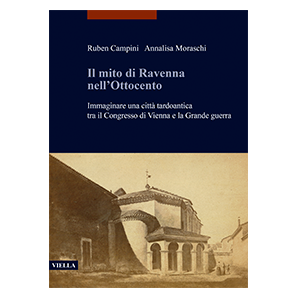
Il mito di Ravenna nell’Ottocento
Immaginare una città tardoantica tra il Congresso di Vienna e la Grande guerra
Ruben Campini & Annalisa Moraschi
2023
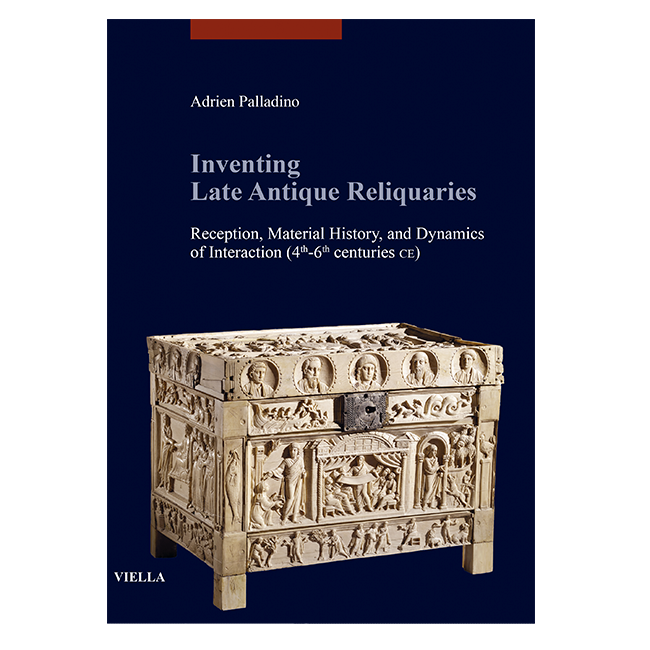
Inventing Late Antique Reliquaries
Reception, Material History, and Dynamics of Interaction (4th-6th centuries CE)
Adrien Palladino
2022
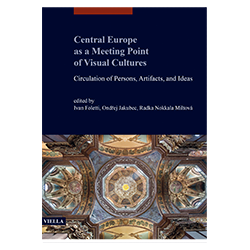
Central Europe as a Meeting Point of Visual Cultures
Circulation of Person, Artifacts, and Ideas
Ivan Foletti, Ondřej Jakubec, Radka Nokkala Miltová eds
2021
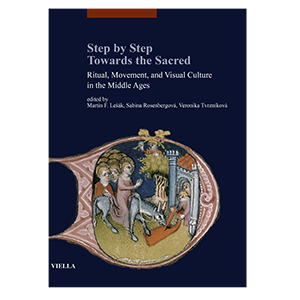
Step by Step Towards the Sacred
Ritual, Movement, and Visual Culture in the Middle Ages
Martin F. Lešák, Sabina Rosenbergová, Veronika Tvrzníková eds
2020
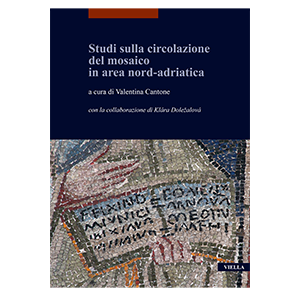
Studi sulla circolazione del mosaico in area nord-adriatica
Valentina Cantone ed.
2019
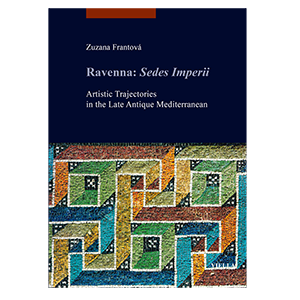
Ravenna: Sedes Imperii
Artistic Trajectories in the Late Antique Mediterranean
Zuzana Frantová
2019
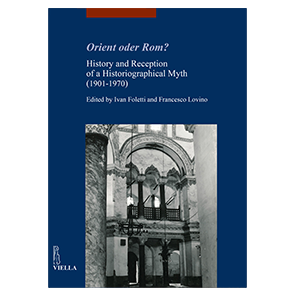
Orient oder Rom?
History and Reception of a Historiographical Myth (1901-1970)
Ivan Foletti and Francesco Lovino eds
2018
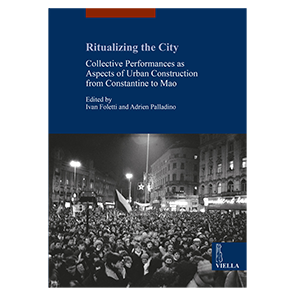
Ritualizing the City
Collective Performances as Aspects of Urban Construction from Constantine to Mao
Ivan Foletti and Adrien Palladino eds
2017

From Byzantium to Holy Russia
Nikodim Kondakov (1844-1925) and the Invention of the Icon
Ivan Foletti
2017

The Fifth Century in Rome
Art, Liturgy, Patronage
Ivan Foletti, Manuela Gianandrea eds
2017
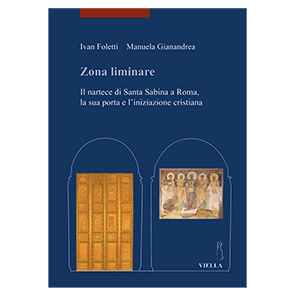
Zona liminare
Il nartece di Santa Sabina a Roma, la sua porta e l’iniziazione cristiana
Ivan Foletti, Manuela Gianandrea
2015

The Antique Memory and the Middle Ages
Ivan Foletti, Zuzana Frantová eds
2015
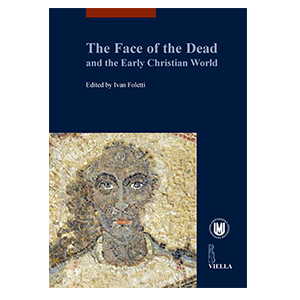
The Face of the Dead and the Early Christian World
Ivan Foletti ed.
2013
CONVIVIA
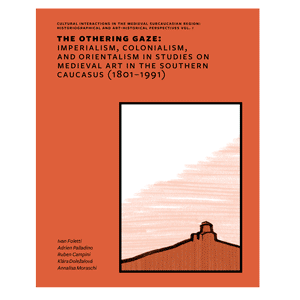
Cultural Interactions in The Medieval Subcaucasian Region:
Historiographical and Art-Historical Perspectives, vols I & II
Michele Bacci, Ivan Foletti eds
2023

Colors in Medieval Art
Theories, Matter, and Light from
Suger to Grosseteste (1100–1250)
Alberto Virdis
2023
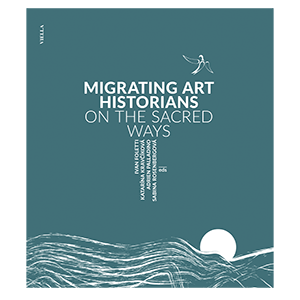
Migrating Art Historians
On the Sacred Ways
Ivan Foletti, Katarína Kravčíková, Adrien Palladino and Sabina Rosenbergová eds
2018

The Mystic Cave
A History of the Nativity Church at Bethlehem
Michele Bacci
2017
parva CONVIVIA

Ženy u oltáře?
Matka Boží a gender
v raném křesťanství
Ivan Foletti
2023
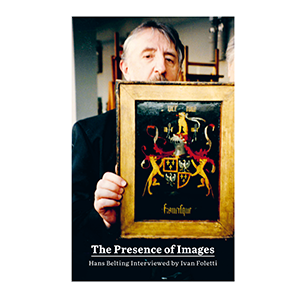
The Presence of Images
Hans Belting Interviewed by Ivan Foletti
Ivan Foletti
2023
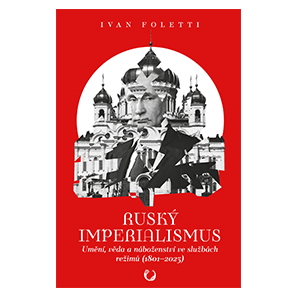
RUSKÝ IMPERIALISMUS
Umění, věda a náboženství ve službách režimů (1801–2023)
Ivan Foletti
2023
THE CURRENT STATE OF RUSSIAN FOLK ICON PAINTING
Nikodim P. Kondakov
Ivan Foletti, Adrien Palladino & Zuzana Urbanová eds
2022

Potenciál migrace
Hranice, karantény a osudy meziválečných uprchlíků
Ivan Foletti, Karolina Foletti & Adrien Palladino
2022
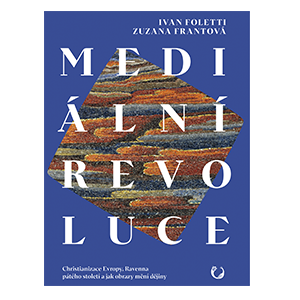
Mediální revoluce
Christianizace Evropy, Ravenna pátého století a jak obrazy mění dějiny
Ivan Foletti, Zuzana Frantová
2021

Byzantium or Democracy?
Kondakov’s Legacy in Emigration: the Institutum Kondakovianum and André Grabar,
1925–1952
Ivan Foletti, Adrien Palladino
2020
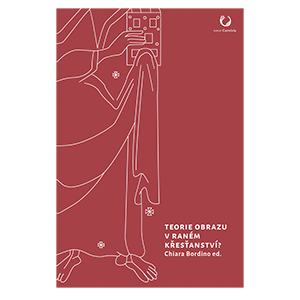
Teorie obrazu v raném křesťanství?
Výběr z textů pozdně antických myslitelů s komentářem
Chiara Bordino ed.
2020
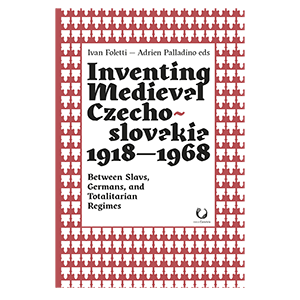
Inventing Medieval Czechoslovakia 1918–1968
Between Slavs, Germans, and Totalitarian Regimes
Ivan Foletti, Adrien Palladino eds
2019
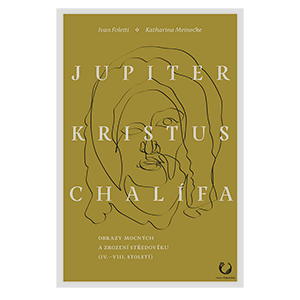
Jupiter, Kristus, Chalífa
Obrazy mocných a zrození středověku (IV.–VII. století)
Ivan Foletti, Katharina Meinecke
2019

Ženy u oltáře. Nikdy?
Ivan Foletti
2018

Plotinus and the Origins of Medieval Aesthetics
André Grabar
2018
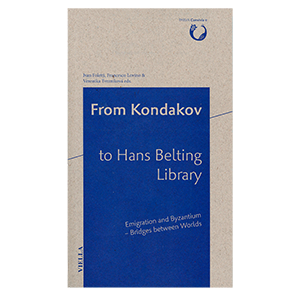
From Kondakov to Hans Belting Library
Emigration and Byzantium – Bridges between Worlds
Ivan Foletti, Francesco Lovino, Veronika Tvrzníková eds
2018
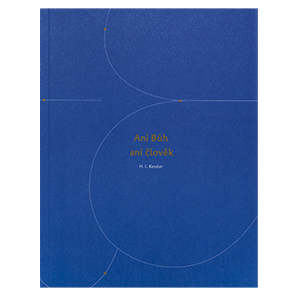
Ani Bůh ani člově
Slova, obrazy a středověká úzkost z výtvarného umění
Herbert L. Kessler
2016
parva CONVIVIA2
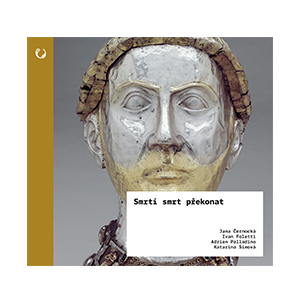
SMRT SMRTÍ PŘEKONAT
Relikvie a jejich moc ve středověku
Jana Černocká, Ivan Foletti, Adrien Palladino & Katarína Šimová
2023
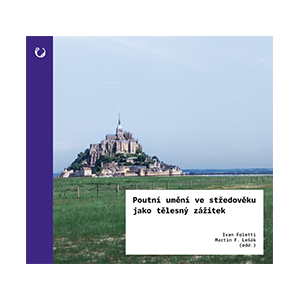
POUTNÍ UMĚNÍ STŘEDOVĚKU JAKO TĚLESNÝ ZÁŽITEK
Krajina, poutník a poklad
Jana Černocká, Martin Drlíček, Ivan Foletti, Martin F. Lešák, Adrien Palladino & Pavla Tichá
2022
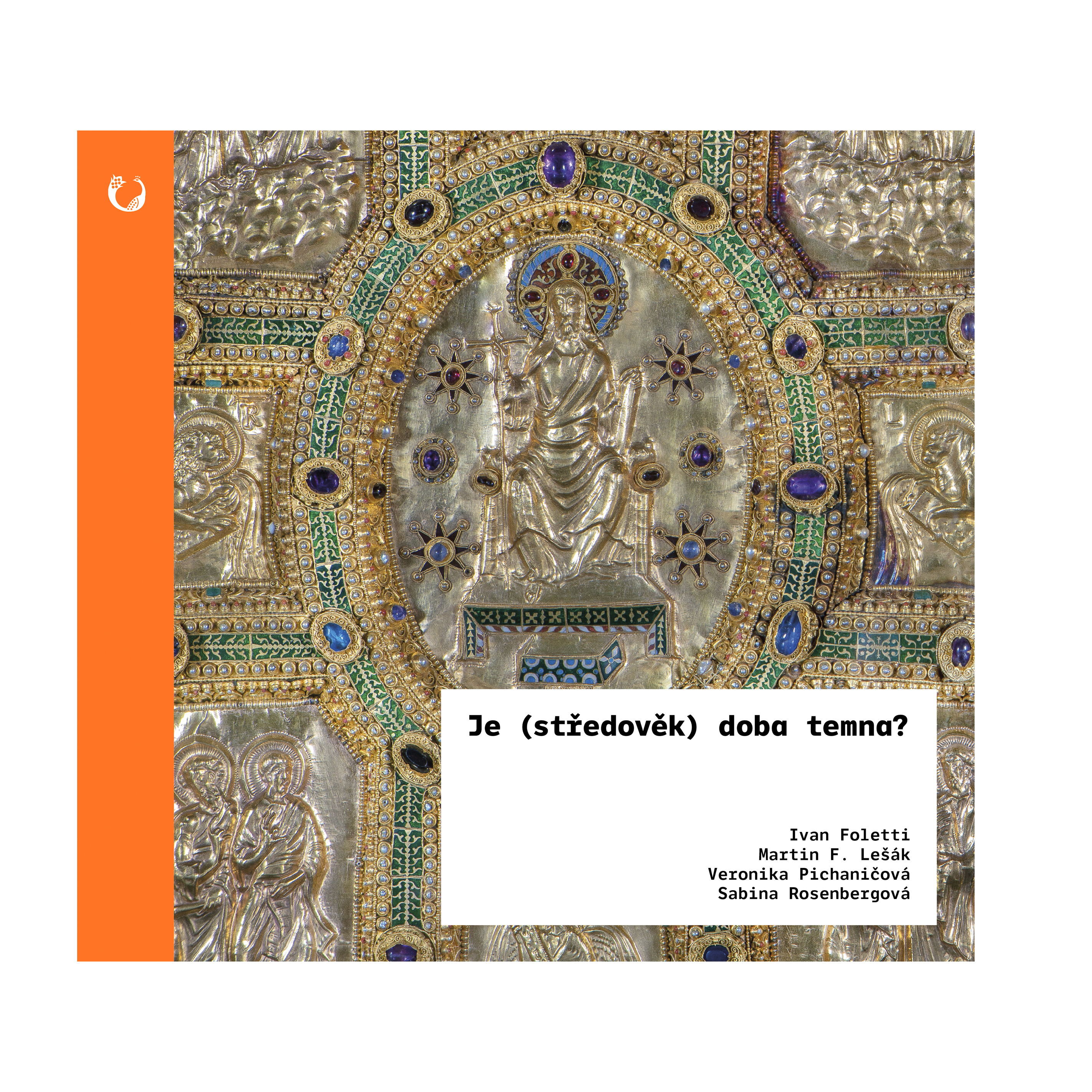
Je (středověk) doba temna?
Umění, migrace a moc
Ivan Foletti, Martin F. Lešák, Veronika Pichaničová, Sabina Rosenbergová
2021
IN BETWEEN
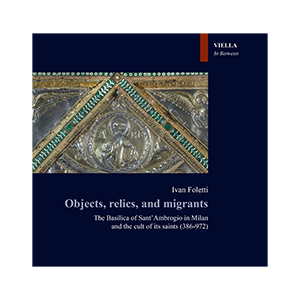
Objects, relics, and migrants
The Basilica of Sant’Ambrogio in Milan and the cult of its saints (386-972)
Ivan Foletti
2020
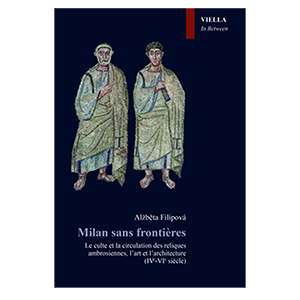
Milan sans frontières
Le culte et la circulation des reliques ambrosiennes, l’art et l’architecture (IVe-VIe siècle)
Alžběta Filipová
2019
TRAVEL LOGS
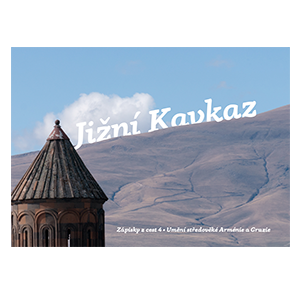
Zápisky z cest 4
Jižní Kavkaz
Klára Doležalová, Ivan Foletti & Karolina Foletti eds
2022
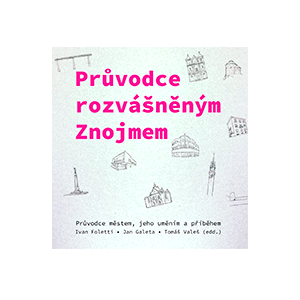
Průvodce rozvášněným Znojmem
Ivan Foletti, Jan Galeta & Tomáš Valeš eds
2022
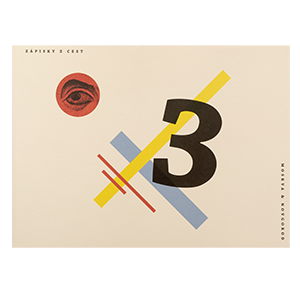
Zápisky z cest 3
Moskva & Novgorod
Ivan Foletti, Karolina Foletti, Martin F. Lešák, Petr M. Vronský eds
2017
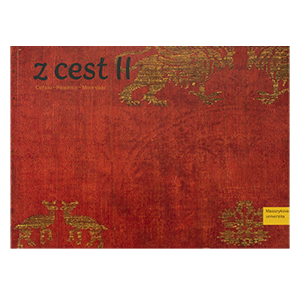
Zápisky z cest 2
Cefalù – Palermo – Monreale
Ivan Foletti, Michal Kolář eds.
2015
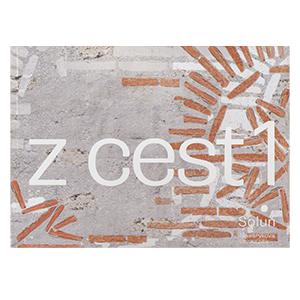
Zápisky z cest 1
Jižní Balkán: Ochrid, Kurbinovo, Kastoria, Soluň
Ivan Foletti, Zuzana Frantová, Monika Kučerová eds
2014
OTHERS
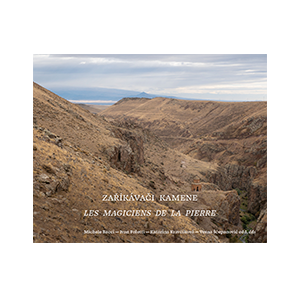
Zaříkávači kamene
Les magiciens de la pierre
Michele Bacci, Ivan Foletti, Katarína Kravčíková, Vesna Šćepanović eds.
2023
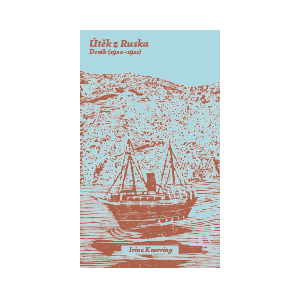
Útěk z Ruska
Deník (1920–1921)
Irina Knorring
2022
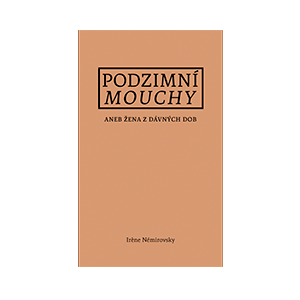
Podzimní mouchy
aneb Žena z dávných dob
Irène Némirovsky
2022
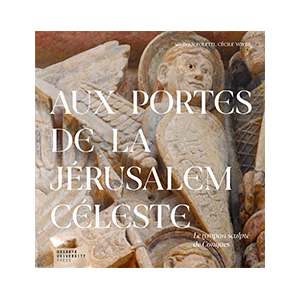
Aux portes de la Jérusalem Céleste
Le tympanon sculpté de Conques
Ivan Foletti, Cécile Voyer
2022
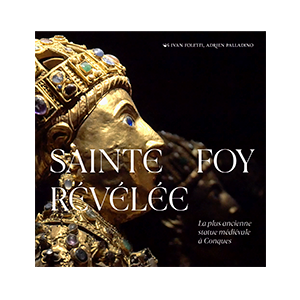
Sainte Foy Révelée
La plus ancienne statue médiévale à Conques
Ivan Foletti, Adrien Palladino
2021
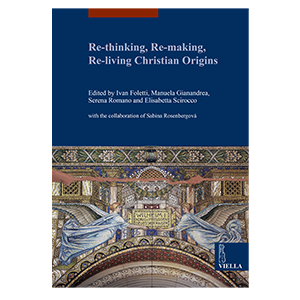
Re-thinking, Re-making, Re-living Christian Origins
Ivan Foletti, Manuela Gianandrea, Serena Romano and Elisabetta Scirocco eds.
2018
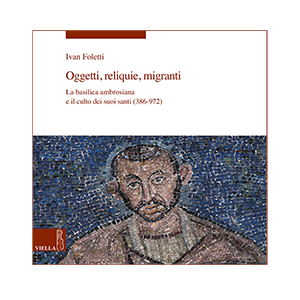
Oggetti, reliquie, migranti
La basilica ambrosiana e il culto dei suoi santi (386-972)
Ivan Foletti
2018
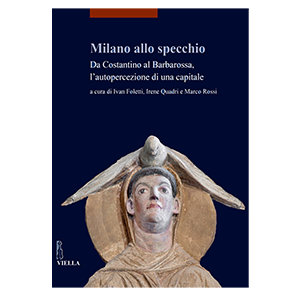
Milano allo specchio
Da Costantino al Barbarossa l’autopercezione di una capitale
Ivan Foletti, Irene Quadri, Marco Rossi eds
2016
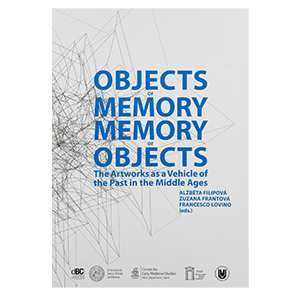
Objects of Memory, Memory of Objects
The Artwork as a Vehicle of the Pastin the Middle Ages
Alžběta Filipová, Zuzana Frantová, Francesco Lovino eds
2014

Heresy and Loyalty
The Ivory Diptych of Five Parts from the Cathedral Treasury in Milan
Zuzana Frantová
2014

Opuscula historiae artium
Supplementum
Byzantium, Russia and Europe: Meeting and Construction of Worlds
Ivan Foletti ed.
2013
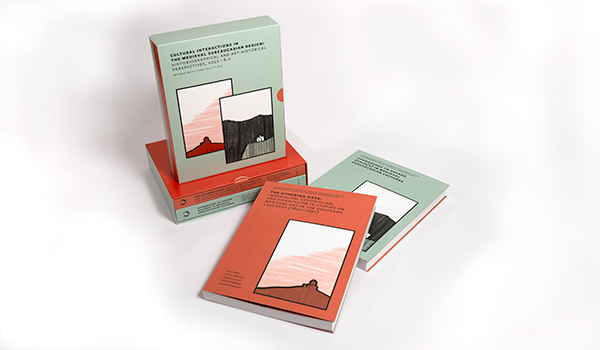
Cultural Interactions in The Medieval Subcaucasian Region:
Historiographical and Art-Historical Perspectives, vols I & II

Zaříkávači kamene
Les magiciens de la pierre
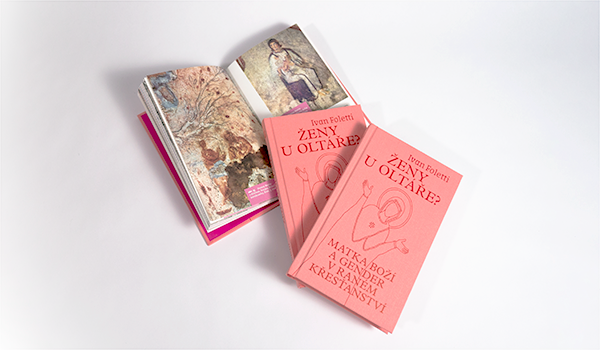
Ženy u oltáře?
Matka Boží a gender v raném křesťanství
Virgin. Widow. Priestess. At the dawn of the Christian society around 400, women gain power. But how long will they keep it? Who helped them to their new position and what was the cause of their downfall? The author of the book looks back into the past to portray a pivotal period of women's emancipation and their previously unprecedented involvement in church and social life. This story has been almost erased from our history. However, references to it have remained hidden in works of art that today bear precious witness to the emancipated and confident women who once stood on the pedestal of ecclesiastical life.
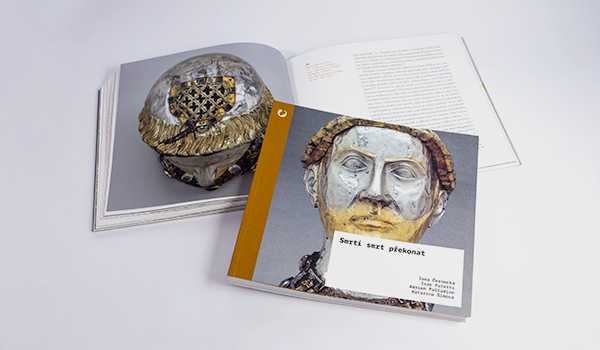
Smrt smrtí překonat
Relikvie a jejich moc ve středověku
Adrien Palladino & Katarína Šimová
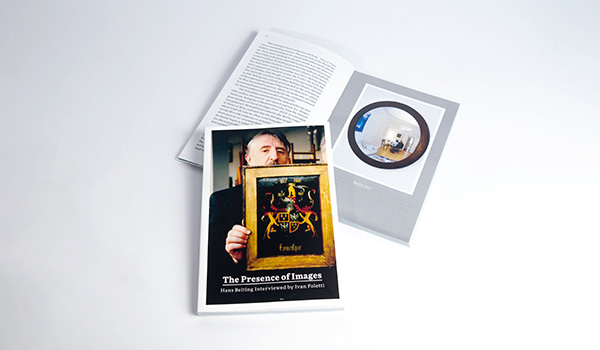
The Presence of Images:
Hans Belting Interviewed by Ivan Foletti
Presenting a long-term informal interview, this book’s contents span the spring of 2017 and early January 2023. This was a conversation between friends, protracted by phone calls and home visits, but with that spark of electric excite- ment fed by shared interests and desires. Here, Hans Belting, one of the greatest art historians ever, recounts his intellectu- al parabola. Wandering from post-war Germany to the United States in the late 1950s, to Europe in the second half of the twentieth century and into the beginning of the new millennium, readers will slow- ly uncover the common threads of his life story: the shimmering function of images between body and object, an openness to collaboration and interdisciplinarity, and of course, a fascination with the history of images from the Middle Ages up to the contemporary moment.

Il mito di Ravenna nell’Ottocento
Immaginare una città tardoantica tra il Congresso di Vienna e
la Grande guerra
The nineteenth century constituted for the city of Ravenna a period of profound changes, marked by two pivotal political events on a broader scale, the Vienna Congress (1814–1815) – after which the city was reassigned to the Papal States – and the political Unification of Italy (1861). Indeed, from the beginning of the century, Ravenna, by that time an impoverished peripheral city, tried to reclaim a prominent role by promoting its glorious late antique past, embodied in the exceptional Early Christian monuments of the city.
The present book aims to describe this process, its reasons, and its consequences, to understand how it contributed to the creation of a new identity for Ravenna. To do so, the book reconstructs the dialogue between the images of the city that emerged respectively from the Western artistic historiography and travel accounts, and the promotion of local initiatives, with a special focus on the restoration campaigns carried out on Ravenna’s late antique monuments in this period. Ultimately, by crossing the history of art history and the political use of restorations, this book shows how the “Byzantine myth” of Ravenna was invented and shaped between 1814 and 1914.

Colors in Medieval Art
Theories, Matter, and Light from
Suger to Grosseteste (1100–1250)
Projected color saturates our world of images and screens, leading to a dissociation of color from material realities through its cultural attachment to light and the efflorescence of optics. Under these conditions, it is difficult to imagine a past where color was an eminently material, cultural, and social object. This book argues that color is and was a central “cultural object” within art history, a fact first elucidated through an examination of the debates and difficulties of color in language, theology, science, and philosophy. Following this overview of medieval aesthetical debates, the author pursues two pivotal case studies which span the twelfth and thirteenth centuries: the basilica of Saint-Denis and the Cathedral of Lincoln. The case studies both center the art of stained glass, a revolutionary medium that blurs the boundaries between color, materiality, and light. Emerging strongly throughout this beautifully illustrated volume are traces of a central Middle Ages in which color played a fundamental yet groundbreaking role at the crossroads of aesthetic, intellectual, and theological issues.

Ruský imperialismus
Umění, věda a náboženství ve službách
režimů (1801–2023)
Vladimir Putin uses the past to defend his undoubtedly imperialist politics. He sees Russia as an empire to be preserved and expanded. But what is the history of Russian imperialism? Is it really something inherently given, as the rhetoric of the Putin regime is trying to make us believe? Using the past two centuries as a case study, this book traces the use of architecture, images, and the humanities as tools for constant reaffirmation of an empire whose identity is largely based on a fabricated history. In this story, Byzantium becomes the ultimate authority justifying the aggressive politics of the Russian state, while Orthodoxy is seen as a bridge between the medieval past and the present. One of the apparent paradoxes of this narrative is the exploitation of the same past for the benefit of completely different regimes—from the last Romanovs to Stalin to Putin. The fundamental question that remains to be answered is the following: Does this propaganda image really correspond to an intrinsic Russian identity?

Útěk z Ruska
Deník (1920–1921)
translation by Lucie Dlouhá & Karolina Foletti
The future poet, 14-year-old Irina Knorring, left the Russian Empire in November 1920 on one of the 126 ships carrying the remnants of the White Army from the Crimea. Writing a diary was her solace and joy on her difficult journey into exile. Despite the hardships she describes, however, her writings are not harrowing. They come across simply and directly, like a conversation with a loved one.Today Irina's diary is not only the personal story of a young girl from Kharkiv, but also offers an immediate insight into a bygone era and holds up a mirror to our own.

Podzimní mouchy
aneb Žena z dávných dob
translation and epilogue by Karolina Foletti
In the short, Chekhovian-tinged novel Autumn Flies, the author portrays the decline of the Russian Karin family, whose world collapses in the heat of the revolution. Fleeing the Bolsheviks, the Karins take refuge in France, leaving only their old faithful nanny, Tatyana Ivanovna, in the family mansion. Eventually, she too follows in their footsteps and leaves the home that the Bolshevik regime has destroyed for good. Irène Némirovsky narrates sensitively but without exaggerated pathos the story of people experiencing the end of an era and the pain of losing their home and their loved ones. An aging nanny is the protector of memories of the old Russia, which fade in emigration and dissolve in the constant worry of making a living. With her death, the old world, too, is passing away. Although in moments of despair the heroes turn into languid and tired autumn flies that ‘[...] fly exhausted and irritable, crashing into windows and dragging their half-dead wings behind them’, in the end they too come to a bitter reconciliation with the new routine. The scope of the book is a reminder that a powerful effect can be achieved with few words. Indeed, the only criticism of the novel is that it is read so quickly. Probably in one sitting.
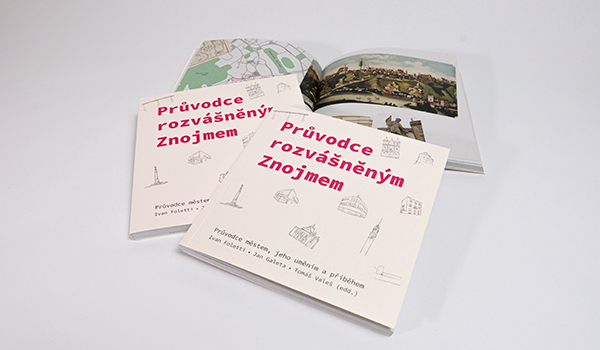
Průvodce rozvášněným Znojmem
History - not only of Central Europe - was written against the unique panorama of Znojmo as we know it, for instance, from Kraví hora. Art monuments discussed in this guide were thus created in a close dialogue with the joys and sorrows of their time. It might seem to the uninitiated viewer that these are mute witnesses, but the opposite is true - each one of Znojmo’s landmarks has a story to tell, often almost invisible, but all the more powerful. The chapters of this unconventional guide to the city are an attempt to introduce the reader not only to the artistic monuments, but also to the stories that took place within their walls. In addition, the individual buildings are not presented as separate “sights” but rather as organic parts of the whole. In our narrative, Znojmo becomes a real ecosystem in which artistic monuments have been linked to the stories of people - heroes as well as anonymous townspeople - who used them throughout the centuries. The aim of this book is to introduce the kind reader to Znojmo in a different way. We want the story of the town and its buildings entertain, move, and educate you.
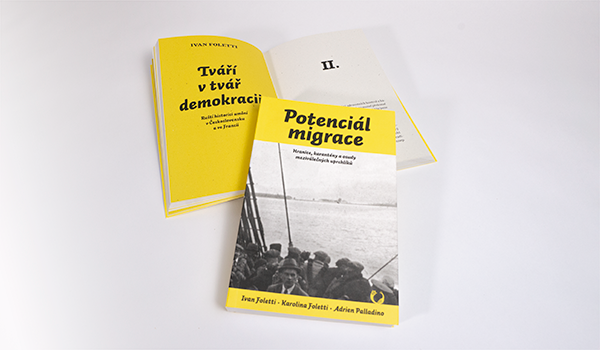
Potenciál migrace
Hranice, karantény a osudy
meziválečných uprchlíků
The political situation and escalating social tensions in the interwar Russia and Germany drove hundreds of thousands of people from their homes and forced them to seek refuge abroad. However, crossing the borders on the way to safety involved many difficulties. Among other things, refugees from Russia were hit by anti-epidemic measures designed to stop the deadly typhus wave. Similar measures stood in the way of German Jews fleeing Hitler a few years later. The flight across the border and the experience of emigration were also reflected in the lives and works of writers Irène Némirovsky and Hélène Iswolsky and art historians Nikodim Kondakov, André Grabar, Richard Krautheimer, and Ernst Kitzinger. Although they had to face numerous difficulties, life in exile also provided them with many new opportunities that greatly enriched the society that welcomed them. The book deals with events that are a hundred years old, but the themes it addresses - border closures, sanitary measures, and emigration - are still pressingly relevant today.
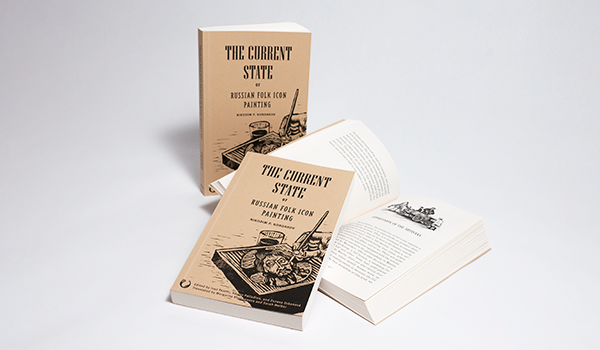
The Current State of Russian Folk Icon Painting
Nikodim P. Kondakov
In 1901 Nikodim Pavlovič Kondakov, one of the founders of art history in Russia and a specialist in medieval art, decided to undertake a surprising expedition. Driven by a desire to see first-hand the last places where devotional images - the famous icons - were produced in the traditional way, he braved the bumpy and uncertain roads of the Russian countryside. The book you hold in your hands, published for the first time in 1901 and now available to an international audience, is much more than an account of his trip. It guides the reader through pre-revolutionary Russia, as Kondakov travels in search of local production, seeking genuinely Orthodox manifestations of an art that he saw as a direct line stretching back to the medieval past. In his very personal style, Kondakov is ultimately on a mission to save the ancient art of icons, hoping to save an art form dwindling under competition from industrial production. Today, this book is more relevant than ever, since it questions the roots of Russian culture, tradition, and its feeling of exclusivity. Framed by the texts from leading scholars on Russian and Byzantine art, this volume is vividly illustrated by contemporary comic book artist Michele Foletti, giving life to the stories recalled by Kondakov.
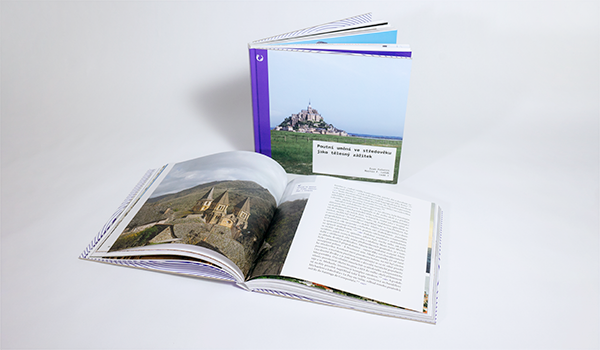
Poutní umění středověku jako tělesný zážitek
Krajina, poutník a poklad
Adrien Palladino & Pavla Tichá
Many people today imagine medieval pilgrimage as an almost fanatical religious act. This image is based on modern prejudices about medieval religion, which is usually associated with irrationality, manipulation, lack of tolerance, and even violence. But how did the medieval pilgrimage actually work? What did a medieval pilgrim and the world around him look like? And what is the relationship between pilgrimage and art? These are some of the questions this book seeks to answer. It accompanies medieval pilgrim on his journey through the countryside to his final destination, the interior of the pilgrimage church. It demonstrates how the sacred was experienced through all senses thanks to the art present, the smell of incense, the light of candles, or the pleasant coldness inside. One thing seems certain: in the pre-modern world, just like today, wandering was a life-changing experience that left no one indifferent.
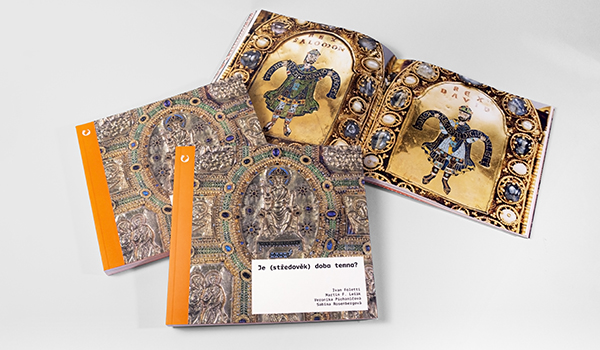
Je (středověk) doba temna?
Umění, migrace a moc
Veronika Pichaničová, Sabina Rosenbergová
In popular culture, the Middle Ages have often been represented as a dark period full of misery, while medieval art has been regarded decadent. If we, however, resolve to look closer, we encounter a much more lively and diverse world that cannot be characterized in few sentences, a world filled with light as much as with darkness. The authors of the book contemplate on early medieval art and visual cultures with the aim to refute the most widespread stereotypes related to the period. Did the fall of the Roman Empire and the Migration Period lead to a decline of artistic production? Was the medieval landscape interwoven with dark, dense, and dangerous forests, as we know them from the Robin Hood legends or the literary works of the Romanticism? Was the religious sphere strictly divided from the profane one not to be desecrated? Was the art's purpose solely to celebrate God, and were gold and precious stones instrumental only for the manifestation of the power and wealth of the Church? Authors seek to find answers to these and other questions and present the early Middle Ages rather as a colourful mosaic, a period of vivid cultural exchange and diversity, and, in certain sense, as a cradle of abstract and conceptual thinking. In the end, the main goal of the book is to answer, at least partially, the question in its title, i.e. were the Middle Ages a dark period of history?
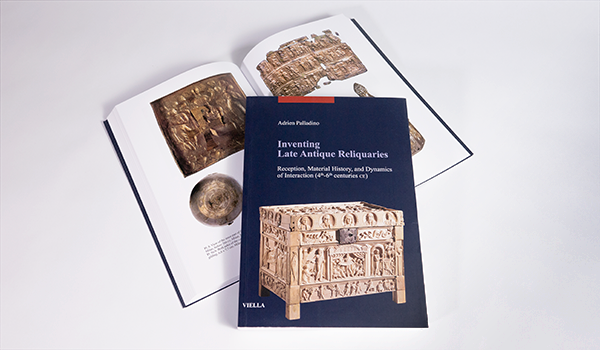
Inventing Late Antique Reliquaries
Reception, Material History, and Dynamics of Interaction
(4th-6th centuries CE)
The cult of saints, their relics, and devotion to their shrines is a phenomenon born in Late Antiquity that durably shaped medieval and modern practices across a broad geographical and cultural area spreading first throughout the Roman Empire and beyond. How was the creation of vessels for the holy remains of saints implemented during a culturally heterogenous period? Indeed, how could boxes of various shapes, sizes, and materials become containers to shelter sacred matter? What materials could be used in reliquaries’ making, and what images should adorn them? And how did reliquaries, with their geographical and social portability, contribute to the translocation of site-bound sanctity and the spread of saints’ and shrines’ networks across the Late Antique world? Tracing the medieval reliquary’s “pre-history”, this volume examines boxes bearing Christian images and patterns made between the fourth to the sixth century CE. It investigates how vessels adorned with images acquired meaning and power, exploring the dynamics of transformation that accompany both the creation of these objects and their long history of reuse, marginalization, and rediscovery.
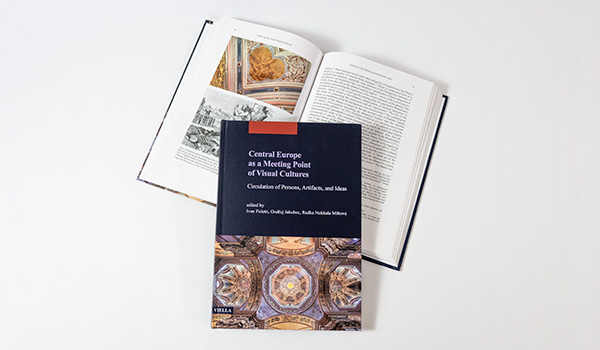
Central Europe as a Meeting Point of Visual Cultures
Circulation of Persons,
Artifacts, and Ideas
The end of World War I in 1918 meant a radical transformation of Central Europe: the multicultural space of former empires became divided into individual nation-states. This altered all spheres of life, deeply impacting the discipline of art history as well. The cosmopolitan vision of art history developed by figures from the Vienna School such as Franz Wickhoff and Alois Riegl was gradually replaced by new self-referential narratives. This nationalist tendency was reinforced by the division of Europe after World War II. In the wake of Jiří Kroupa's pioneering studies, this volume takes a truly transcultural approach to art produced in the Central European region from the 12th to the 20th century. Freed from national prejudices, a region shaped by the constant movement of people, ideas, and objects emerges.

Step by Step Towards the Sacred
Ritual, Movement, and Visual Culture in the Middle Ages
The articles published in this volume aim to contribute to the art historical debates on the role of visual culture within medieval rituals and how the latter were experienced bodily. The studies focus on the essential importance of movement within medieval religious practice and its impact on production, conception, perception, and use of artistic objects and architecture in the Middle Ages. At their core is the moving body, individual or collective, which enters into dialogue with the surrounding architectural or urban space, artefacts, and images, thus awakening their sacred potential with each and every step. Shifting attention to the movement of the worshipers and the objects themselves, this book wishes to instigate further discussion on various medieval visual cultures.

Mediální revoluce
Christianizace Evropy, Ravenna pátého století
a jak obrazy mění
dějiny
The book provides an analysis of the factors that led to the fundamental transformation of European society within the framework of Christianization. It focuses especially on the role of ritual, the significance of mosaic as a new visual medium, and the innovative visual forms of the fourth and fifth centuries. Based on the mosaic decoration of the Orthodox Baptistery in Ravenna, it offers a complex analysis of rituals and their perception in the present and in the past.
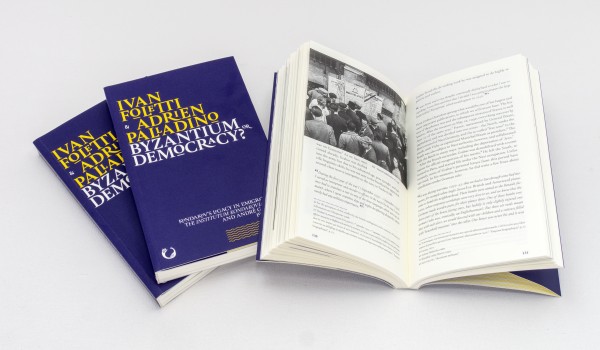
Byzantium or Democracy?
Kondakov’s Legacy in Emigration: the Institutum Kondakovianum
and André Grabar, 1925–1952
The notion of “Byzantium” has for centuries been associated with autocracy, totalitarianism, and
suppression of freedom. It thus became the favored model
for the Russian autocracy. In the
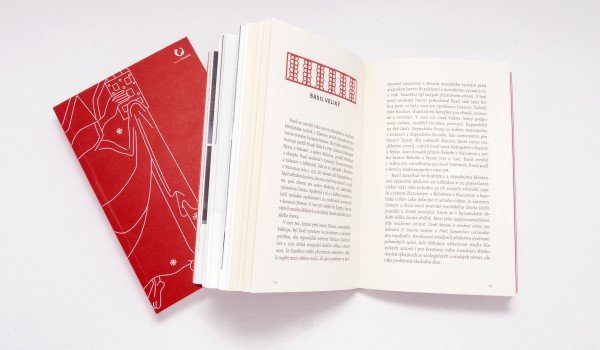
Teorie obrazu v raném křesťanství?
Výběr z textů pozdně antických myslitelů
s komentářem.
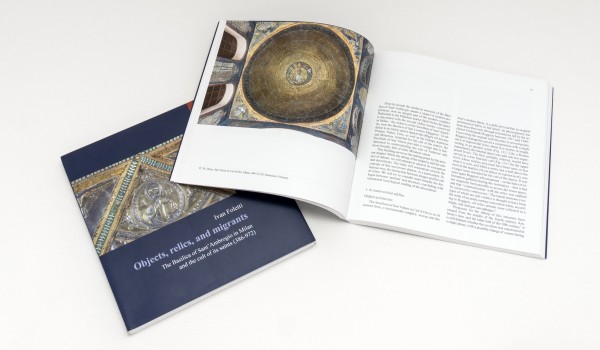
Objects, relics, and migrants
The Basilica of Sant’Ambrogio in Milan and the cult of its saints
(386-972)
The Ambrosian basilica in Milan, built first in the age of Ambrose
By studying a few famous artworks preserved in the basilica, such as the Chapel San Vittore in Ciel d’Oro, the golden altar, and the ciborium of Saint Ambrose, this book explores interactions between the topology of the building and its objects, the relics the basilica was constructed around, and which have the notion “migrating”. In other words, we would like to analyse in the longue durée how the objects became understood as relics and materialized sanctity, derived from them, and served as an instrument of exclusion and instruction in their ethnically problematic context.
This volume presents a rich photographic material, which was made especially for this publication.
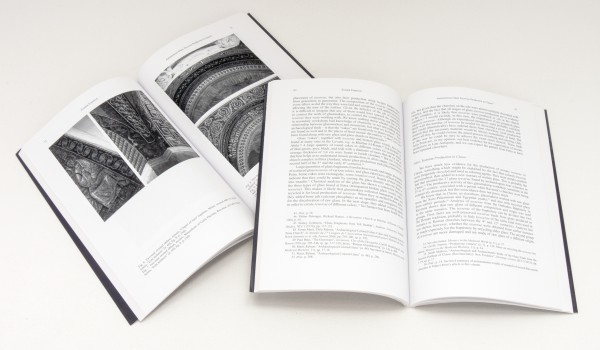
Studi sulla circolazione del mosaico in area nord-adriatica
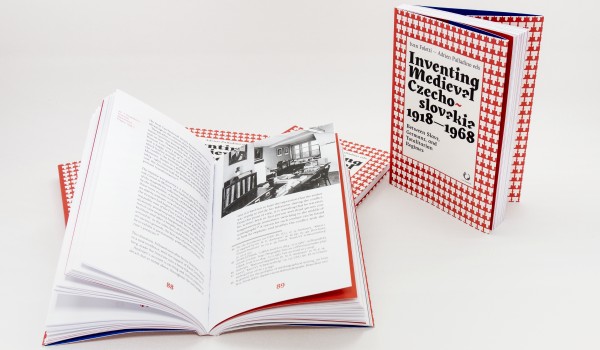
Inventing Medieval Czechoslovakia 1918–1968
Between Slavs, Germans, and Totalitarian
Regimes
Is it possible to "invent" the past? Through a series of studies, this volume explores the history
of how this process occurred in Czechoslovakia within the period from about the end of the First
World War until the 1960s. It focuses specifically on the
The presented case studies show how research on medieval artworks and objects could become a fertile ground for the creation of ideological tools and narratives. In this way, understanding the historiography of art history also contributes to redefining Central Europe as a place of transcultural encounters and dialogues, beyond historical ruptures.
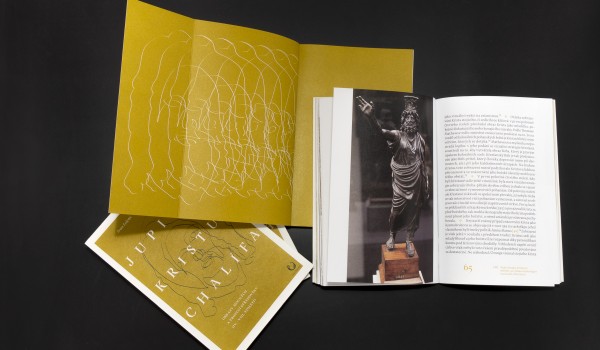
Jupiter, Kristus, Chalífa
Obrazy mocných a zrození středověku (IV.–VII. století)
[Jupiter, Christ, Caliph. Images of the Powerful Men and the Birth of the Middle Age (IV.–VII.
century) ]
The pagan god Jupiter Serapis, Jesus Christ, and Muslim caliphs – their appearances are unexpectedly
close to one another. The authors contemplate
what seems to be a paradox and ask: Why do these
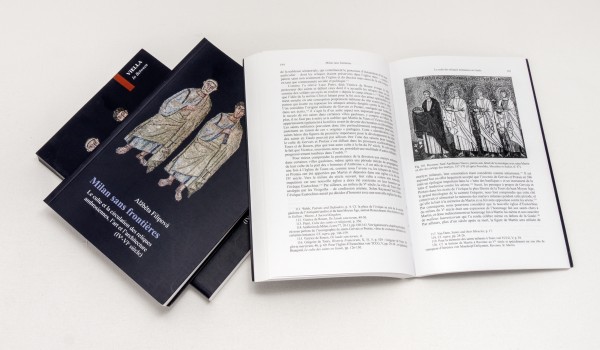
Milan sans frontières
Le culte et la circulation des reliques ambrosiennes, l’art et
l’architecture (IVe-VIe siècle)
This book is dedicated to the cultural transfer within the network woven by the Bishop Ambrose between the city of Milan and the Christian West. Generated by donations of relics, multiplied from the holy remains preserved in Milan, the cultural transfer consists mainly in the dissemination of architectural and figurative models and the creation of a recognizable sacred landscape around the Capital. This phenomenon opens up perspectives towards a more global reflection on the construction of identity through the cult of saints and its artistic manifestations between the 4th and 5th centuries. Also, by recognizing an important center of ecclesiastic influence next to the see of Rome, dominant in the scholarly literature, it contributes to the debate on the centre-periphery dichotomy. This book was published in the series In between. Images, Words, and Objects that promotes studies in art history within the framework of a broad, trans-disciplinary approach.
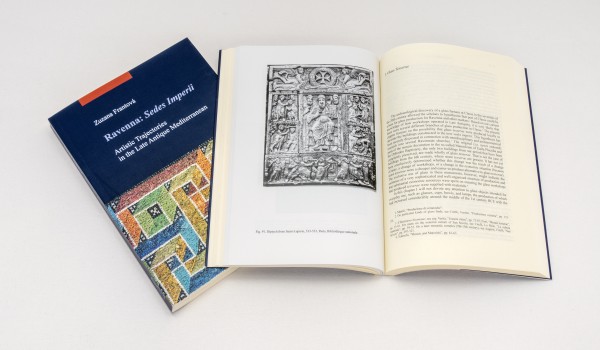
Ravenna: Sedes Imperii
Artistic Trajectories in the Late Antique Mediterranean
Ravenna was one of the most significant administrative, political, and religious centres of the late antique period. This book focuses on the period between the transfer of the imperial court to Ravenna (402) and the last western emperor Romulus Augustus’ deposition by the Germanic commander Odoacer (476), a period when Ravenna was the seat of western emperors. The book is premised on the author’s conviction that individual surviving examples of architecture, along with their decoration, sarcophagi, ivory, and gold objects, can be best understood not only by examining their historical context and iconography, but also looking at the very material of these objects and how their production was organised. The book therefore focuses primarily on craftsmen and their traditions, and deliberate breaks with tradition, and on the way workmen moved about the late antique world and thereby fostered the exchange and spread of technology and artistic models. It thus present Ravenna not as an isolated phenomenon (as Ravenna is very often presented in the literature) but as one of many players in the political, ecclesiastical, and social games of the late antique world.
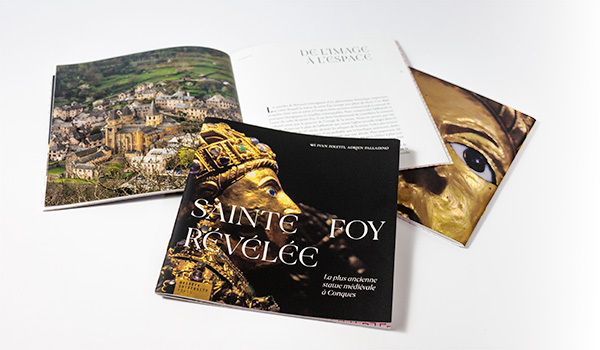
Saint Foy Révelée
La plus ancienne statue médiévale à Conques
The booklet Sainte Foy révélée. La plus ancienne statue médiévale à Conques [Sainte Foy Revealed: The Oldest Medieval Statue in Conques] is the first in a series of three booklets in French dedicated to the presentation of various aspects of the cultural heritage of Conques, the abbey church and the treasures in particular, to a broad non-academic audience. This first booklet, richly illustrated with original photographs and illustrations produced in the first year of the project, focuses on the core of the sacred site of Conques and the goal of the pilgrim’s devotion: the golden statue-reliquary of Sainte Foy. This artistic object, which has fascinated pilgrims for centuries, is often presented only as an object of faith or as an artistic bravado; the booklet re-examines it within a network of stories and devotional practices and explains the significance of the reuse of the golden facein providing the iconic potential and authority of a fourth-century emperor to a young female martyr.The goal is thus not only to disseminate the scientific results of the project, but also to make the story of this unique statue known by regular visitors of Conques, be they pilgrims or tourists. Both the format and the style of these booklets are conceived to reach specifically this audience, while at the same time keeping the highest standards for the photographs and illustrations, as well as texts.

Aux Portes de la Jérusalem Céleste
Le tympan sculpté de Conques
Aux portes de la Jérusalem Céleste. Le tympan sculpté de Conques [At the Doors of Heavenly Jerusalem: The Sculpted Tympanum of Conques] is the second bookletin Frenchin the short series dedicated to a broad non-academic audience. With more illustrations than the first one, which are the fruit of a photographic campaign on the tympanum realized within the project, this booklet presents the most visible artwork accessible to the visitor’s gaze when arriving in front of the abbey-church: the richly adorned and polychrome tympanum presenting the scene of the Last Judgement. Sculpted at the beginning of the 12th century, the portal is probably amongst the first of its type along the pilgrimage routes. The goal of the booklet is to present to a broad audience what perception the medieval pilgrims could have had of such an incredible artistic object, how they understood these sculptures and their theme, and what effect this liminal imagery could have had on them. It does so by explaining how a complex message of salvation is reinforced by sculpted images together with an elegant Latin poem which runs around and under them, borrowing from a variety of themes and concepts widespread in the broad and elite cultures of the 12th and 13th centuries.

Re-thinking, Re-making, Re-living Christian Origins
If there is one constant in the history of Christianity and especially of the Western Church, it is its deep desire to be connected with its own past. From the perspective of the longue durée, it might even be possible to state that a meditation on Christian origins was a common and widespread response used throughout history in the face of each great moment of crisis within the Church. In those situations, the rhetoric produced by the Church was always aimed at emphasizing a desire to return to these mythical roots, the ideal community, a pure and radical Christianity. The question underlying this book is the way in which this desire for the past provides the occasion to re-live, re-think and re-create Christian origins. More precisely, the crux of our work is to understand how this desire can transform and rewrite the past both in materiality – with restorations of ancient monuments – and in ideas – writing history. In this book, the main focus of attention is dedicated to three key moments, corresponding more or less to three crucial episodes in the history of the Catholic Church in the modern era. The first of these three is the Reformation and subsequent Counter-Reformation, between the sixteenth and seventeenth centuries. Second comes the moment in which the Catholic Church lost its temporal power during the Unification of Italy and the “spiritual” reaction culminating with the First Vatican Council (1869–1870). Lastly is the period before and after the Second Vatican Council (1962–1965), which can be considered the most significant reaction of Catholicism towards modernity.
Contributors: N. Barbolani di Montauto, X. Barral i Altet, N. Bock, V. Cantone, S. Cracolici, A. Di Croce, S. D’Ovidio, I. Foletti, J. Gebhardt, M. Gianandrea, O. Jakubec, J. Klípa, V. Lucherini, F. Malesevic, S. Pierguidi, C. Piva, S. Rosenbergová, M. Santanicchia, E. Scirocco, I. Fiumi Sermattei, A. Tranchina.
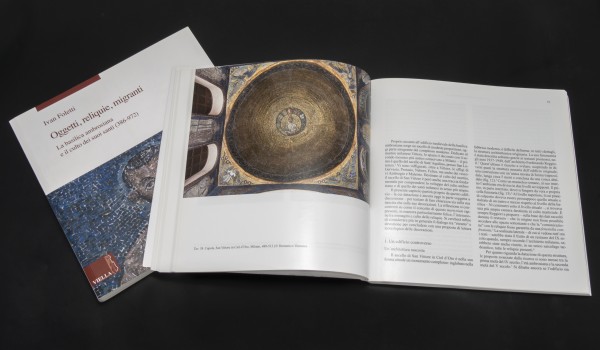
Oggetti, reliquie, migranti
La basilica ambrosiana e il culto dei suoi santi
(386-972)
The Ambrosian basilica in Milan, built first in the age of Ambrose (374–397) and radically reconstructed at the end of the eleventh century, is an extraordinary place of memoria, where many medieval objects and monuments are present.
By studying a few famous artworks preserved in the basilica, such as the Chapel San Vittore in Ciel d’Oro, the golden altar, and the ciborium of Saint Ambrose, this book explores interactions between the topology of the building and its objects, the relics the basilica was constructed around, and which have the notion “migrating”. In other words, we would like to analyse in the longue durée how the objects became understood as relics and materialized sanctity, derived from them, and served as an instrument of exclusion and instruction in their ethnically problematic context.
This volume presents a rich photographic material, which was made especially for this publication.
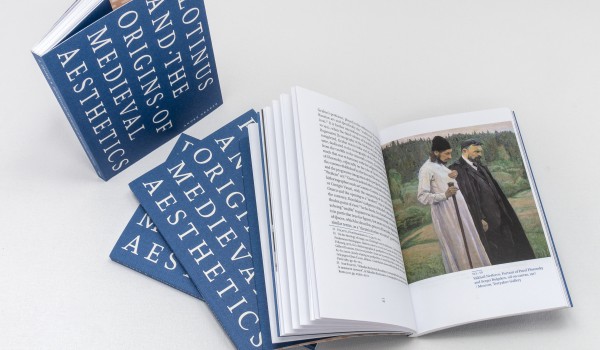
Plotinus and the Origins of Medieval Aesthetics
Plotinus and the Origins of Medieval Aesthetics, an iconic essay of byzantinist André Grabar, first published in 1945 in French, is here presented to the reader for the first time translated in English. It is preceded by an historiographical introduction by Adrien Palladino, presenting the genesis of the text, replacing it within the opus of the scholar, and assessing its relevance within the new horizons of the field of art history.
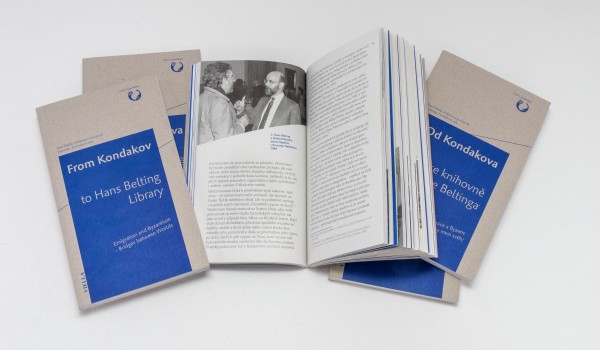
From Kodakov to Hans Belting Library / Od Kondakova ke knihovně Hanse Beltinga
Emigration and Byzantium – Bridges between Worlds / Emigrace a Byzanc – mosty mezi světy
This book is a summary of the contributions presented at the conference of the same name, which took place at the ceremonial opening of the Hans Belting Library in Brno.
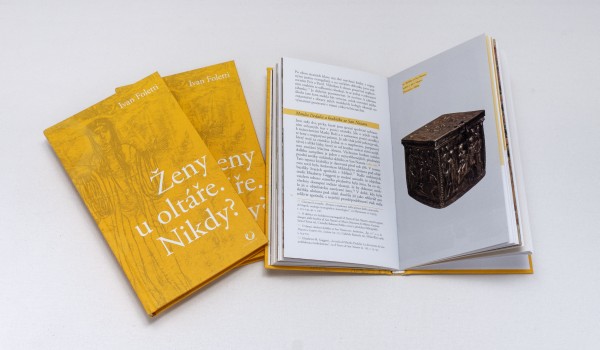
Ženy u oltáře. Nikdy?
What was the role of women in the Church? Nowadays, women, not allowed to be consecrated, are found outside the ecclesiastical hierarchy, which is made up of only consecrated individuals. But was it always like this? The book Ženy u oltáře. Nikdy? (Women at the Altar. Never?) looks to answer this question.
The author includes artwork from the second and third century to the debate, when a new iconography of the Mother of God appears. There are a few types of depictions of Mary that arise around 400. In these images, she has a maforium, a heavy mantle of wives and widows, or, in a second type of depiction, a stole appears under her mantle. Compared with other artworks and written sources from the same epoch, we can conclude that the maforium and stole were a liturgic garment. Attributes of newly consecrated women, who belonged in the Church hierarchy for a short period, would have been, therefore, projected onto the new iconography of the Mother of God, and this depiction would suggest that these women were under Mary’s protection. The social situation was, nevertheless, changing quickly, and women lost their part of Church leadership in the sixth century. Their function was limited to monastic life from then on. However, the depiction of the Mother of God with the stole and maforium has been preserved, and is a precious document for studying the position of women in the Late Antique Church. The book shows that women – whether called diacons, priestesses, or consecrated widows – had their place in the hierarchy of the Late Antique Church.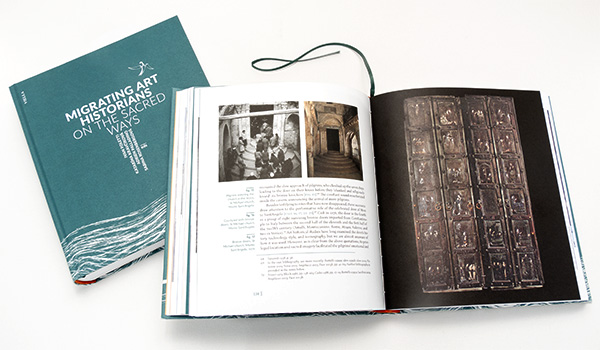
Migrating Art Historians
On the Sacred Ways
Is it possible to reconstruct the feeling of a medieval pilgrim walking towards the sacred? No, it is not. And yet, the experimental project Migrating Art Historians sought to delve into this impossibility. Journeying by foot over more than 1,500 km, twelve modern pilgrims – students and scholars from Masaryk University – reached some of the most impressive artistic monuments of medieval France.
One year later, this book presents their intellectual, human, and art historical theoretical know-how, transformed by the experience of their bodies. In this context, exhausted and activated bodies became instruments asking new questions to medieval artworks and sources. Structured as a walk along pilgrimage routes, this book presents firstly the landscape, followed by liminal zones, before leading the reader inside medieval churches and ultimately towards the sacred. Original scientific art historical research combines with personal engagement. What emerges is the subject confronted with the experience of medieval art.
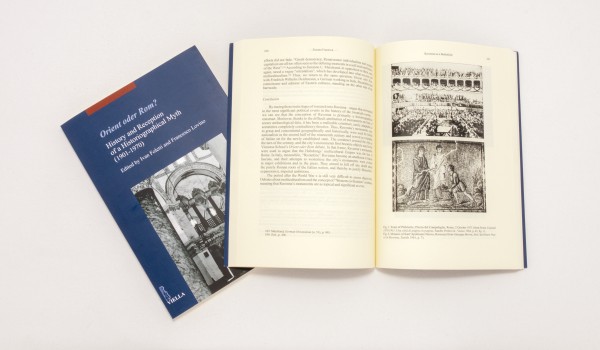
Orient oder Rom?
History and Reception of a Historiographical Myth
(1901-1970)
Today, the question of the origins of Christian aesthetics is no longer a topical issue in medieval art history, although a persuasive answer has never been formulated. One of the reasons for this oblivion deals with the looming figure of Josef Strzygowski, who published his pivotal volume Orient oder Rom in 1901, now discredited for its racial and proto-Nazi ideas. However, the debate does not concern Strzygowski alone: the prodromes of this critical concept go back to the nineteenth century, when the Russian, Austro-Hungarian and Ottoman empires fought to control contested territories, and studies of the humanities mirrored these conflicts. This volume, originating in the urgency to reflect on this pivotal conundrum in our field, attempts to reconstruct the (mis)fortune of a question that, according to Alois Riegl, “is the most important and most trenchant one in the entire history of mankind to date”.
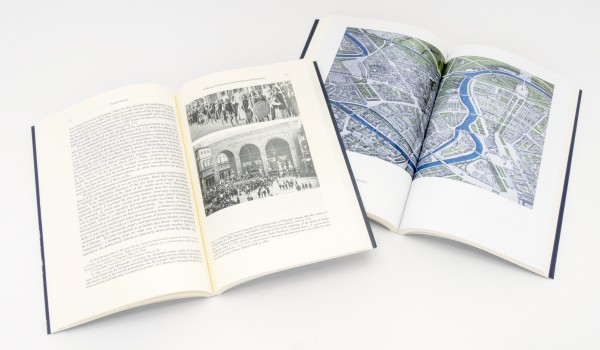
Ritualizing the City
Collective Performances as Aspects of Urban Construction
from Constantine to Mao
The city has always been, and remains, the ideal place of collective rituality. It is the city that has hosted, since Antiquity, collective celebrations of victory, important religious ceremonies, but also ritual consecrations of the elite. Based on these essential notions, the aim of this book is to reflect on a specific issue: the interaction between ritual and city space. Our wish is to understand, in a multidisciplinary and cross-epochal approach, how a collective liturgy, civic or religious, can unfold within the public space and transform it. In addition to sacred buildings and seizures of power, the square and the streets become in this sense important identity-shaping loci. Bringing places of power to the street or the square – which are by definition liminal spaces – means entering into a dialogue constructed between those who organise the ritual, those who perform it and those who witness it. It seems that it is in compromise between the different components of society that collective rituals can happen within the public space. Therefore, it is no surprise that the crucial question for this book is the way in which this same space is adapted to the requirements of the ritual, or, on the contrary, how the ritual adapts to the space.
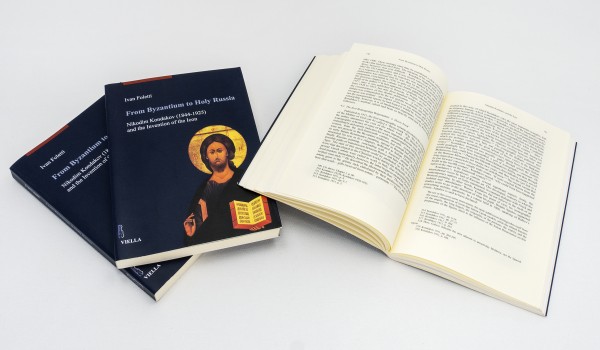
From Byzantium to Holy Russia
Nikodim Kondakov (1844-1925) and the Invention of the Icon
Tracing the life and work of Nikodim Kondakov, a pioneer in the field of late Antiquity and Byzantium in eastern Europe, this biography is a true tale of adventure. It follows the complicated and challenging events in Kondakov’s life before and after the Russian Revolution, from his humble beginnings to his university studies and analyzes his inspired creation of an innovative and precocious study of art history in Russia. From a brilliant and successful career to the trauma endured during the Russian Revolution, the story becomes one of wandering and dependence; nevertheless, and in spite of the shift in history and in his own life, Kondakov’s studies sketch a vast geography of Late Antique and medieval culture from the Mediterranean to the Urals. The work approaches distant horizons, giving a glimpse at the migrations from Asia and the inception of medieval Europe with its Christian values; and it travels the paths of history along trails marked by artifacts and monuments. Reconstructing the personal and existential events in Nikodim Kondakov’s life contributes to the understanding of a critical phase in the founding of art history and, more broadly, the histories of Russia and of the countries the scholar traversed during a long life filled with tribulations.
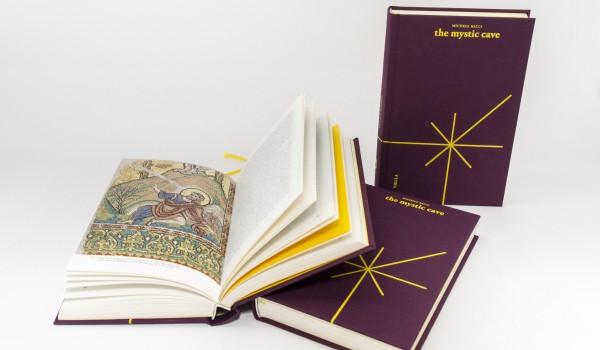
The Mystic Cave
A History of the Nativity Church at Bethlehem
The present work is the first monographic book published in English, since 1910, on the history of the Nativity Church in Bethlehem. In comparison to other Holy Land monuments, this particular site has undergone relatively minor alterations in the course of time. Spared from the destructions that affected other holy sites, such as the Holy Sepulchre, the basilica at Bethlehem stands out for its well-preserved architecture, dating from the late 6th century, and its exuberant mosaic décors completed in 1169, in the period of Crusader rule in Palestine. This book offers a general description of the vicissitudes of the holy site since its very beginnings in Late Antiquity until the present times, with a special focus on the ways in which the complex relationship between the underground holy site, the Nativity cave, housing the very spot of Christ’s birthplace and the manger, and the sumptuously decorated upper church, came to be variously negotiated in the course of time by means of different forms of mise-en-scène. The book is accompanied by a rich apparatus of colour illustrations, plans, and a bibliographic appendix.
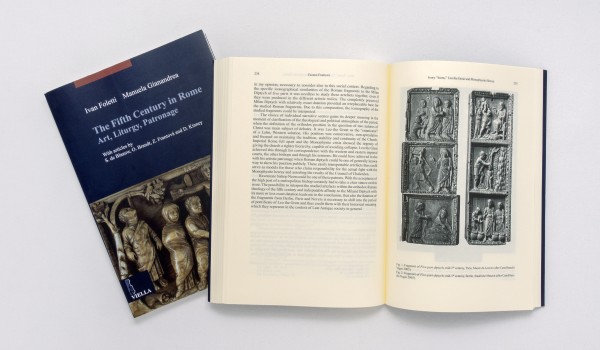
The Fifth Century in Rome: Art, Liturgy, Patronage
With articles from Sible de Blaauw, Olof Brandt, Zuzana Frantová and Dale Kinney
The objective of this book is to draw attention to fifth-century Rome – to those hundred years which even today need to be looked at from different perspectives. It is a key moment, a border between worlds, far too important not to receive further attention.
The studies, presented together here, aim to respond to new demands: the art object remains at the centre, but with a new search for its context. This context would be unthinkable without the key concept of co-existence – between popular and elite culture, popes and emperors, pagans and Christians. As well as between liturgy – intrinsically necessary to the Christian world – and patronage – the intellectual project which stems from a cultural concept. Moreover, co-existence is crucial between the mindset of the Roman elites (the tradition inscribed in the city’s DNA), and new internal and external demands arising from this rich moment in the history of Rome.
The fifth-century, studied in this book, is the moment in which future and past meet, where Antique and Christian coincide. An artistic moment with a single identifying feature: its incredibly rich complexity.
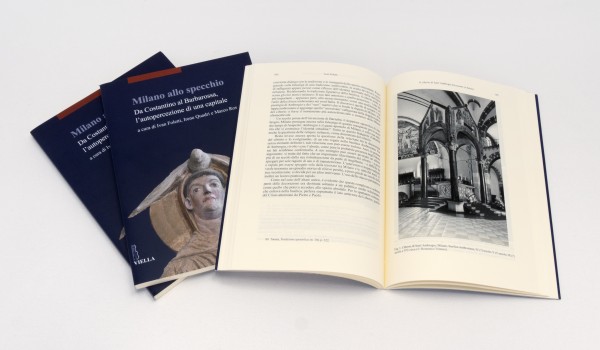
Milano allo specchio
Da Costantino al Barbarossa l’autopercezione di una capitale
Autoreferentiality as a prism through which Late Antique and Medieval Milan can be read is the connecting theme underlying the seven essays in this book. Milan, the capital of the empire, known since the episcopate of Ambrose as a first-rate ecclesiastical metropole and a powerful commune, had exceptional long-lasting development. Nevertheless, its stratification – historical, cultural and material – has only been sporadically explored from an autoreferential perspective. Instead, the focus has been Medieval mentality and the city of Milan, where the tradition came to guarantee the key role of this place, which the Lombardian capital tended to use throughout the Middle Ages.
Immaterial patrimony and the material city – represented by the Basilica Ambrosiana, the pivot of the culture and conscience of the citizens – have been explored from a multidisciplinary point of view. The analysis of historians, archaeologists, art historians and philologists allows us to distinguish the nodal points of this mechanism, providing an innovative all-round vision to better understand what relationship Milan had with its own past, and how this very past constituted the continuity from which the image of the city was formed, to become a fundamental identity aggregator.
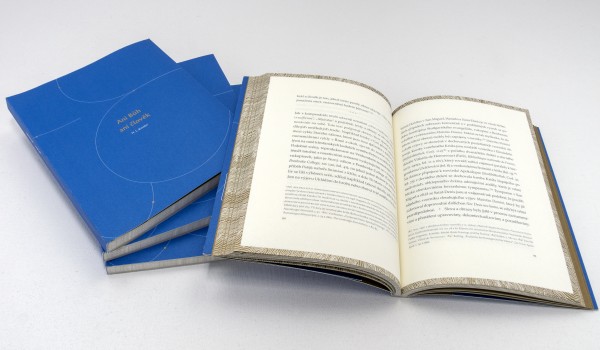
Ani Bůh ani člověk
Slova, obrazy a středověká úzkost z výtvarného umění
The Ani Bůh ani člověk (Neither God nor Man) is a recent work by Herbert L. Kessler. The first edition was published in 2007 as a part of an edition concerning literary sources for artworks. The main aim of this book is the question of legitimacy of depicting God in medieval visual art, and therefore, despite its small size, we can consider it as a synthesis of the author’s scholarly interests. The fisrt Czech translation of the volume is coming to our readers now. It was translated in an unconventional way. The book is a result of a collaboration of students of the Department of Art History, at the Faculty of Arts at Masaryk University.
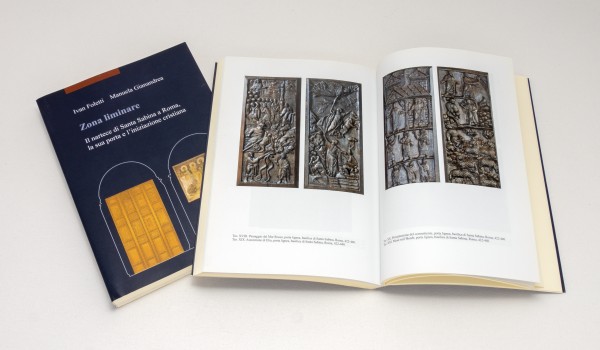
Zona Liminare
Il nartece di Santa Sabina a Roma, la sua porta e l'iniziazione
cristiana
At the top of the Aventine Hill, the Basilica of Santa Sabina stands – one of the most significant monuments of the Late Ancient world. Its main entrance is composed of a spacious narthex, with extraordinary pieces of art, such as an ancient wooden door, a decorative imitation of marble from the fifth century, and an Early Medieval image of Theotokos. The narthex, long overlooked in the research, must have originally been a highly pompous space. However, the importance of the entire building does not reside in its pieces of art, but above all in the place, which the former was intended and created for. The narthex was very probably meant for catechumens and penitents, and must have been a very liminal zone, a world between worlds, the zone of physical and spiritual transition.
This volume attempts to explore this place as a whole, focusing on its historiography, archaeology and decorations, in order to reveal the face of the Late Antiquity, extraordinarily preserved. We would like to offer our reader a synergic view, to show how various coexisting media can lead to an exhaustive comprehension of a Late Antique artistic scene.
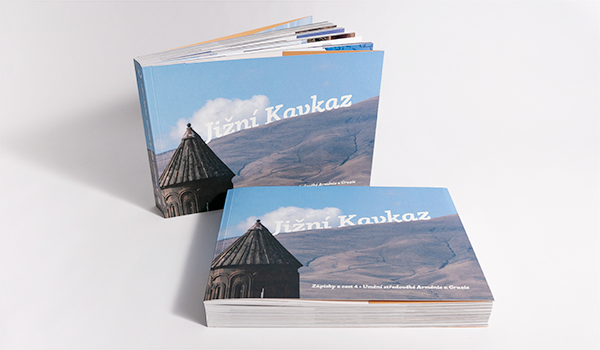
Zápisky z cest 4
Jižní Kavkaz
This book, intended for the admirers of the unique cultural heritage of the South Caucasus and Turkey, is the result of five field trips undertaken between 2015 and 2022 by students and teachers of the Department of Art History at the Faculty of Arts, Masaryk University, Brno to the regions of present-day Armenia, Georgia, and Turkey – the area of the medieval kingdoms of Armenia and Iberia. The book contains short student texts devoted to the outstanding medieval monuments of the region and offering original insights as well as new research data. The number of monuments studied is exceptional, making the present volume one of the first within Czech as well as international environment to deal with the cultural heritage of the region in such a comprehensive way. Prefaced with a scholarly reflection on the specific features of the cultural heritage under examination – including the unique phenomenon of Armenian liturgical anterooms, the so-called gaviths, and the intriguing dialogue between culture and landscape, the book introduces the reader to more than thirty churches, their decorations, liturgical furnishings, and icons. Individual monuments are ordered geographically by modern provinces and regions to make the volume a helpful guide for travellers to this area.
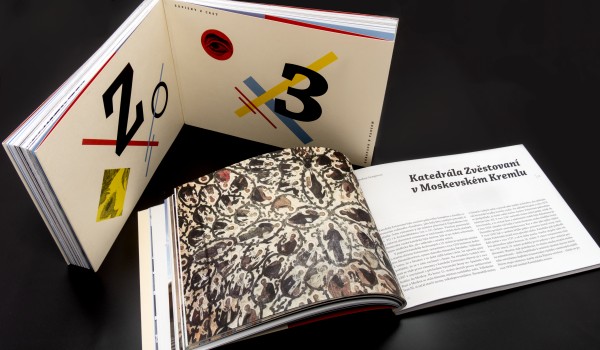
Zápisky z cest 3
Moskva & Novgorod
In the third volume of Zápisky z cest (Notes from Journeys), we explore Moscow and Novgorod, as recorded by the group of teachers and students from the Department of Art History at the Faculty of Arts at Masaryk University in Brno. In composing this publication based on their excursion in November 2014, they aimed to share their gathered knowledge to introduce the (mainly medieval) monuments located in these cities. Nevertheless, the result of their work is not just a simple guidebook to medieval artworks. The current political situation, era of stalinism, the avant-garde of the twentieth century and the reception of medieval art in the nineteenth century are reflected here as well. Moreover, in addition to the entries on crucial monuments of Moscow and Novgorod, the reader can find historiographical reflections and basic bibliographies on each of topics.
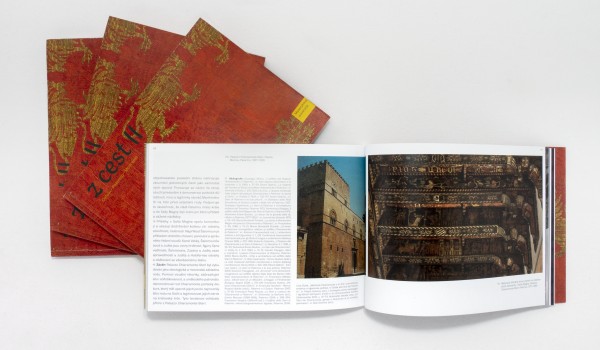
Zápisky z cest 2
Cefalù – Palermo – Monreale
In April 2014, a group of 22 students and teachers gathered in Palermo in Sicily. They were from four different institutions – the Universities of Brno, Lausanne and Vienna, and the Kunsthistorisches Institute in Florence. Their objective was to explore the monuments of the Sicilian Middle Ages, mainly those from the twelfth century. Excursion participants decided, in the footsteps of those on the previous excursion to the Balkans, to share their experiences with a broader public. Just as in the case of the first volume dedicated to the Balkans, this small book is an opuscule, with no ambition of being innovative. It should introduce one of the most interesting and beautiful cultures of the Mediterranean to the Czech public. The authors of most of the texts are students who participated in the excursion. They aimed to compose texts to engage the attention of both the academic and public sphere, and at the same time, they wanted to offer the chance to those interested to consult the best scholarly output on Sicily through a very rich bibliography.
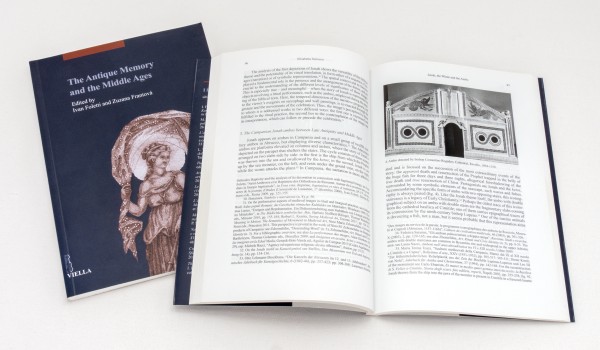
The Antique Memory and the Middle Ages
This volume was born from a desire to leave a tangible trace of the scholarly encounters that have taken place in the past two years at the Center for Early Medieval Studies, Department of Art History, Masaryk University in Brno. Speaking in various forums – structured courses as well as stand-alone lectures – Xavier Barral i Altet, Nicolas Bock, Valentina Cantone, Herbert Kessler, Serena Romano, Elisabetta Scirocco, and Jean-Michel Spieser have sparked exciting discussions of what continues to be known as the Middle Ages.
The common denominator that unites all of the scholarly work presented here was the dialogue between the medieval "present" and the Antique world: from Venice to Campania to Milan, from Constantinople to Burgundy, there had emerged an intellectual and visual experience that suggests the medieval period was a uniquely fertile moment for the engagement with the heritage of Antiquity, filtered and mediated in different ways, but ever present.
The purpose of this volume is to understand why and how patterns, images and ideas from the mythical (but visible) ancient past were received throughout the medieval millennium. We seek to understand why, hic et nunc, clients and workshops deliberately chose to speak in a "classicizing" aesthetic language, and to appropriate concepts belonging to the Antique tradition wholesale.

Objects of Memory, Memory of Objects
The Artworks as a Vehicle of the Past in the Middle
Ages
This publication presents the proceedings of an International PhD student conference, held on December 5–6, 2013, organized in cooperation with the Dipartimento dei Beni culturali: archeologia, storia dell'arte, del cinema e della musica, University of Padua (Italy), and the Centre of Early Medieval Studies, Department of Art History, Masaryk University in Brno. The central topic of the conference was the study of artworks which are intrinsically linked to the notion of memory. The aims of the organizers were twofold: first of all, to understand how icons, books, reliquaries and other artefacts became vehicles of meanings, which are now mostly incomprehensible, but must have been clear to its contemporary audiences, and second, to understand how these objects could have changed the memory of the places in which they were preserved. The essays in this book thus represent some of the perspectives by which an object can be seen in its historicity.
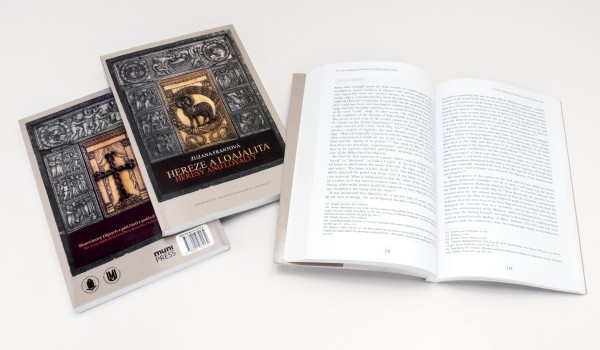
Heresy and Loyalty
The Ivory Diptych of Five Parts from the Cathedral Treasury in Milan
Two luxurious carved ivory panels, preserved in the cathedral treasury in Milan, are the subject of this monographic study. Determining their origin within the context of Ravenna’s artistic production and dating them more precisely was made possible by enamel, a specific goldsmith technique used. The object dates back to the reign of Majorianus, one of the last emperors of the Western Empire (457–461), and the episcopate of the bishop Neon (450–473). Moreover, a detailed iconological analysis implies that the Milan Diptych could be related to the figure of Pope Leon I the Great and his attempts to enact the results of the Council of Chalcedon, held in 451. Finally, by clarifying the relationship between Ravenna and Rome, it was possible to recognize the probable commissioner of the artefact as Neon I., the Bishop of Ravenna. With his demand, he could publicly claim his allegiance to the main objectives of Leon’s policies; the fight against the Monophysite heresy, and the will to maintain a strong hierarchy in the Church, whose unity was in severe danger in that era.
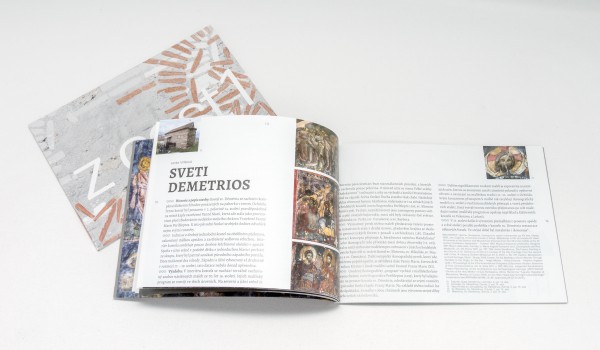
Zápisky z cest 1
Jižní Balkán: Ochrid, Kurbinovo, Kastoria, Soluň
This volume is the result of a scholarly journey to see the medieval monuments of Macedonia and Greece, organized in 2013 by the Centre for Early Medieval Studies at the Department of History of Art at Masaryk University in Brno. This synthetic “guide”, written by the students, introduces crucial medieval monuments located between Ochrid and Thessaloniki. All decorations and buildings are presented in the form of short entries, where every object is described and interpreted. There is a current bibliography under each entry for those interested in deeper research. Photographs, most of which taken in situ, accompany the entries. There is also a brief vocabulary of scholarly terminology at the reader’s disposal. At the end of the book, the reader can find a chronological summary of all the mosaics and paintings attached, with the artworks the authors of the book encountered during their journey. The publication is a useful instrument for getting to know the artistic production of the Balkans.
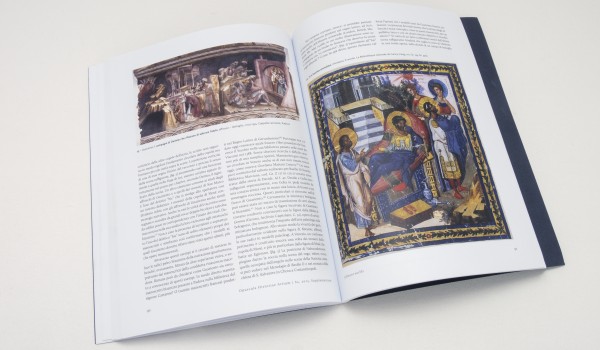
Byzantium, Russia and Europe
Meeting and Construction of Worlds
/Opuscula historiae artium, 62., 2013, Supplementum/
Articles
Ivan Foletti, Byzantium, Russia and Europe. Historiographical construction, mental space and
reality
Jean-Michel Spieser, De Rome à Constantinople et d'un empire à l'autre
Ivan Foletti, Irene Quadri, Roma, l'Oriente e il mito della Traditio Legis
Vladimir Ivanovici, Windows and Church Space in Early Medieval Byzantium and West
Maria Raffaella Menna, Byzantium, Rome, Crusader Kingdoms. Exchanges and Artistic
Interactions in the Second Half of the Thirteenth Century
Zuzana Frantová, Kristýna Pecinová, The icon of Old Brno: a reconsideration
Denise Zaru, Gli affreschi della cappella carrarese a Padova: le origini bizantine della
narrazione visiva di Guariento
Pavel Rakitin, Byzantine echoes in the nineteenth century press and in the writings of
Russian intellectuals
Chiara Croci, L'immagine dell'arte bizantina nella storiografia occidentale di fine '800: il
caso dei mosaici del battistero di San Giovanni in Fonte a Napoli
Silvia Pedone, Valentina Cantone, The pseudo-kufic ornament and the problem of crosscultural
relationships between Byzantium and Islam
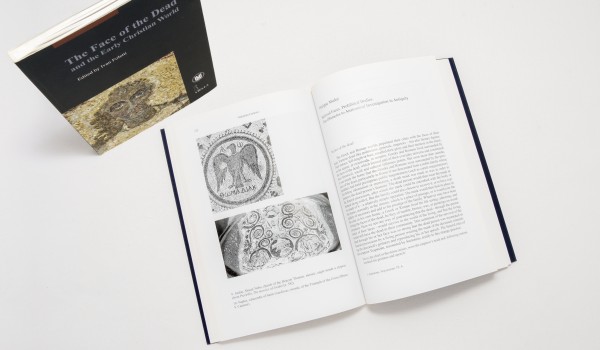
The Face of the Dead and the Early Christian World
Peter Brown has described the situation of the holy bodies in the Early Christian period like a “place between Earth and Heaven”. The principal aim of this book is precisely to deal with this intersection between two worlds, expressed by the Dead, and in particularly by his images, and his faces.
The first part of this book looks into the portrait and its function, and the reason for which Late Antiquity, following a custom it inherited from previous eras, covered itself with individual images of the deceased. As in previous eras, the portrait appears, above all, to be an attempt to express the individual in his or her entirety; the techniques and “instruments” perfected in the course of the 3rd century, however, lead to divergent formal and conceptual results.
The second question, answered more briefly, deals with the perception and representation of the dead body as a whole, defined by David Le Breton as “la souche identitaire de l'homme.” The question asked is a fundamental one, since we are confronted with humanity itself after its passage to that which lies beyond: whether the body becomes just a memory or whether it preserves the real presence of the man who it once was.
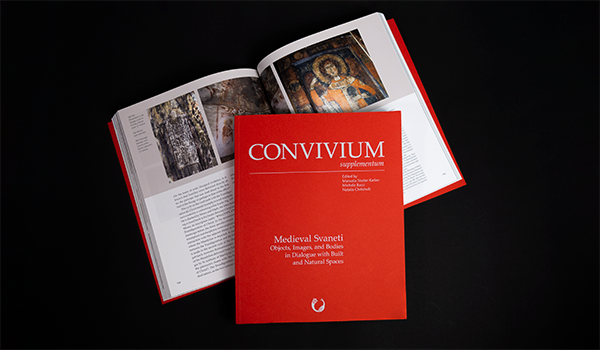
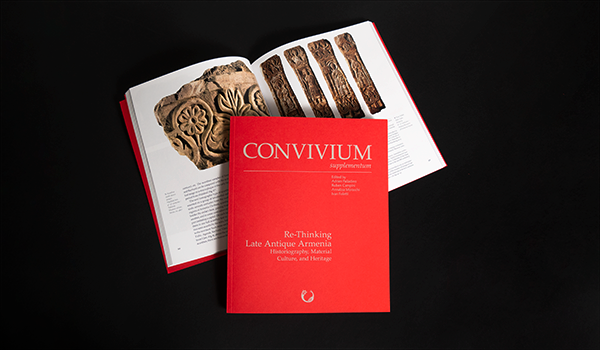
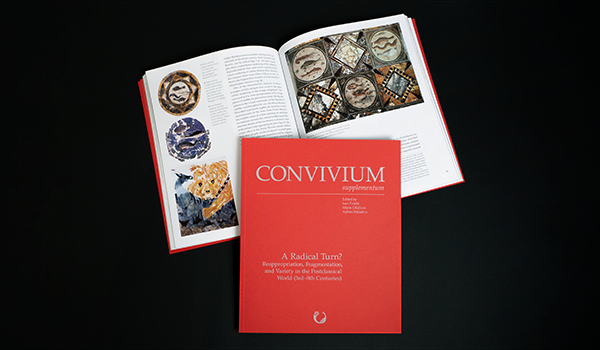
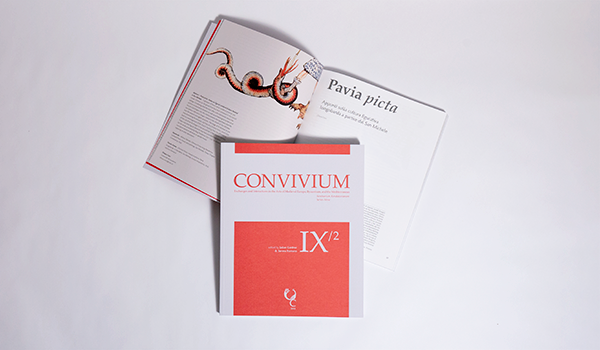
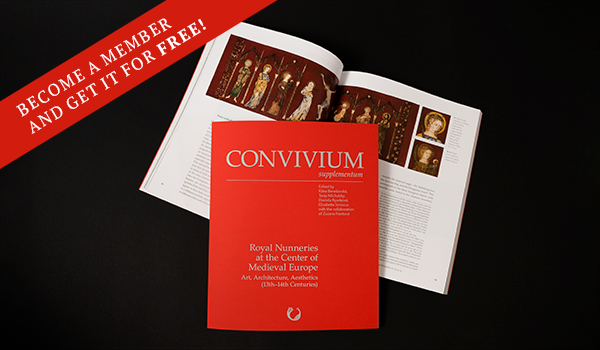
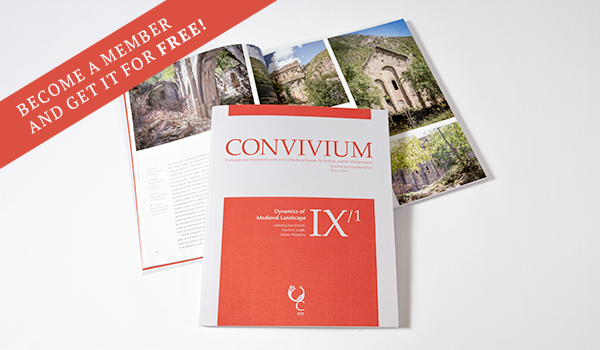
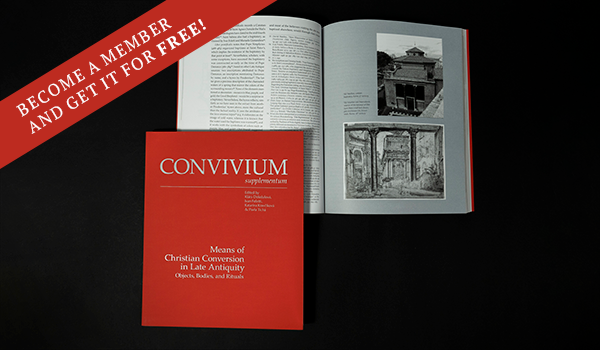
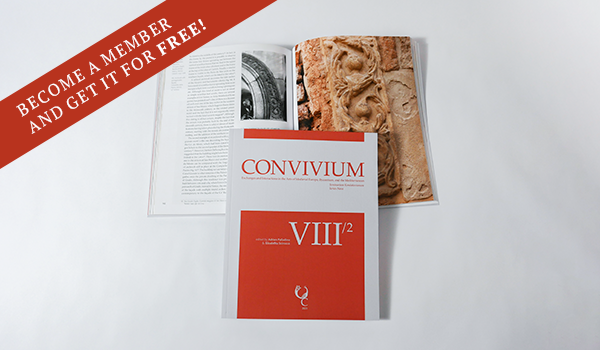
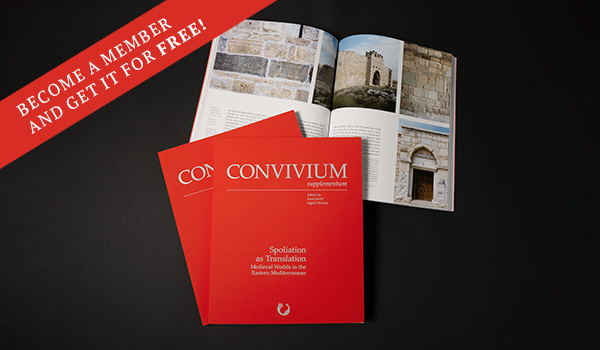

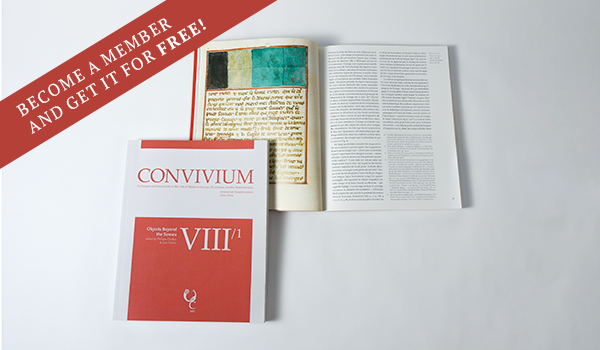
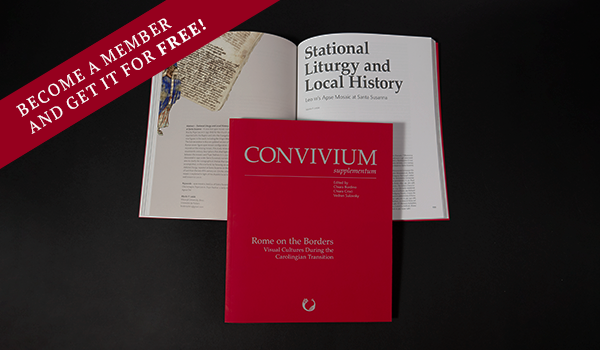
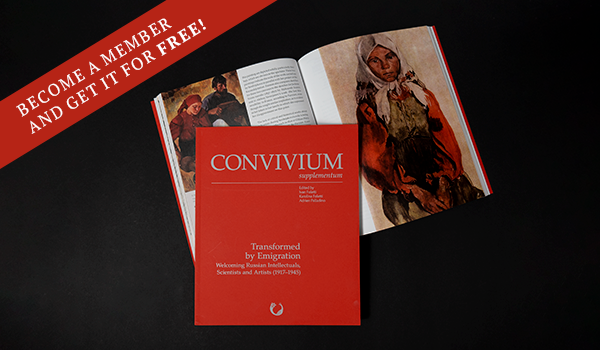
.png)
